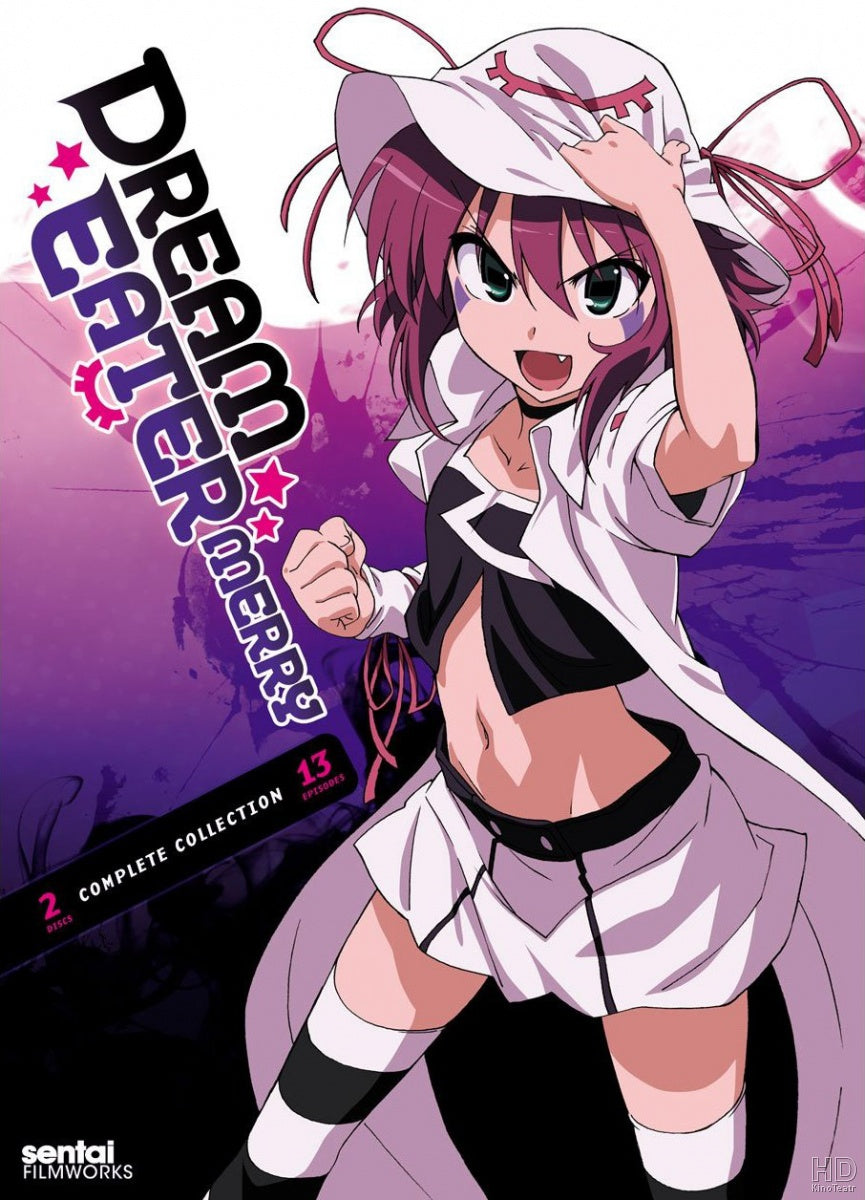Dream Eater Merry
“Where Dreams and Reality Collide”
How often do you think about your dreams? What role do they play in your life, and are they based on anything within or outside of you? Do you let others in on them or keep them all to yourself? Do you discuss your goals with anyone else in private? What if they come from within you and do not harm you? What if they come from outside you, and something mysterious helps you achieve your goal to the point where the dream becomes a reality?
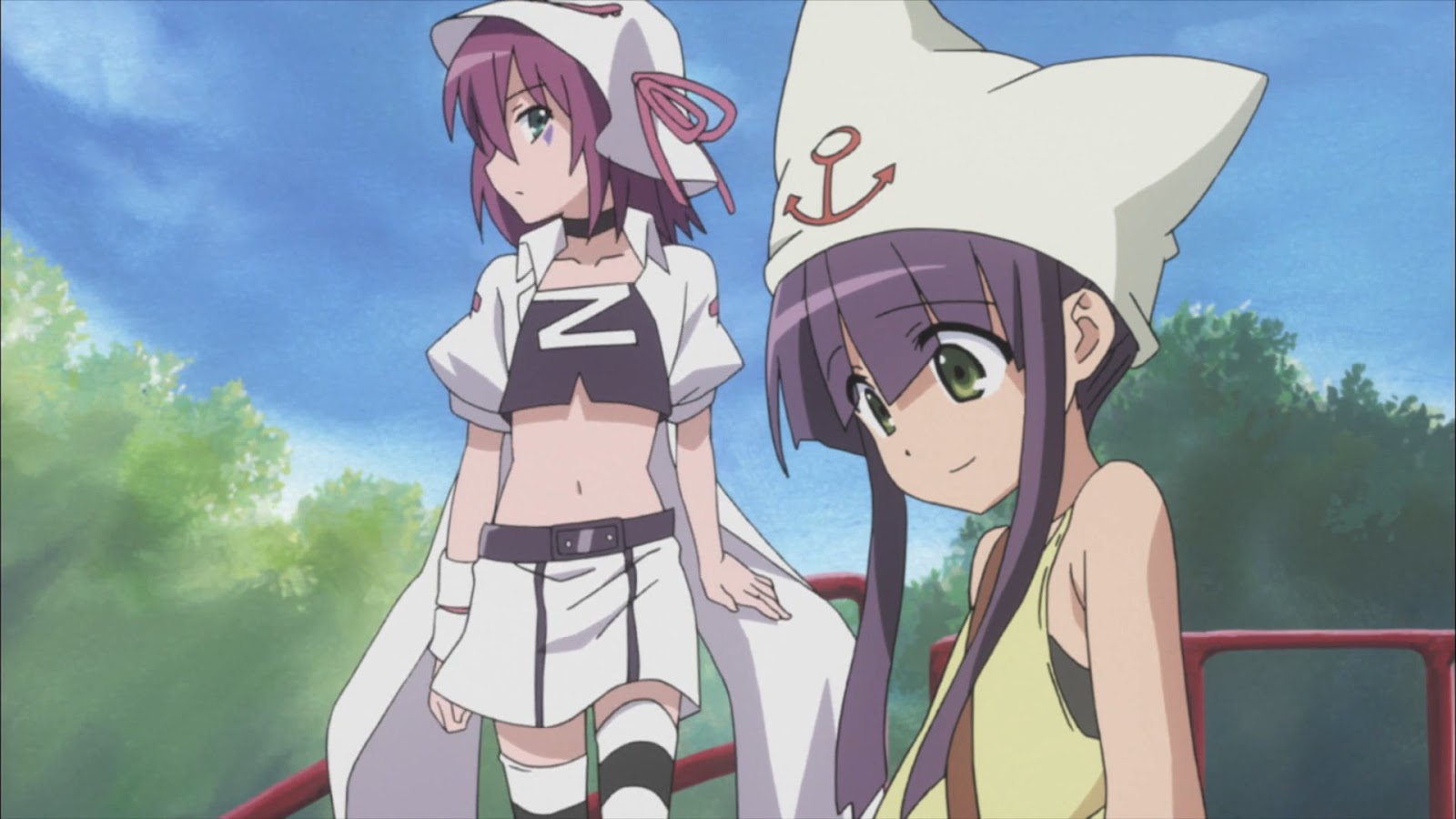
What if the entity you shared your dream with desired to control you? How would you react? Rather than simply existing alongside you, they consume you. This entity may yearn for all the positive outcomes we create in our dreams. This entity may yearn to feel reality for itself or to share that feeling with you. The latter would most likely be preferred over the former.
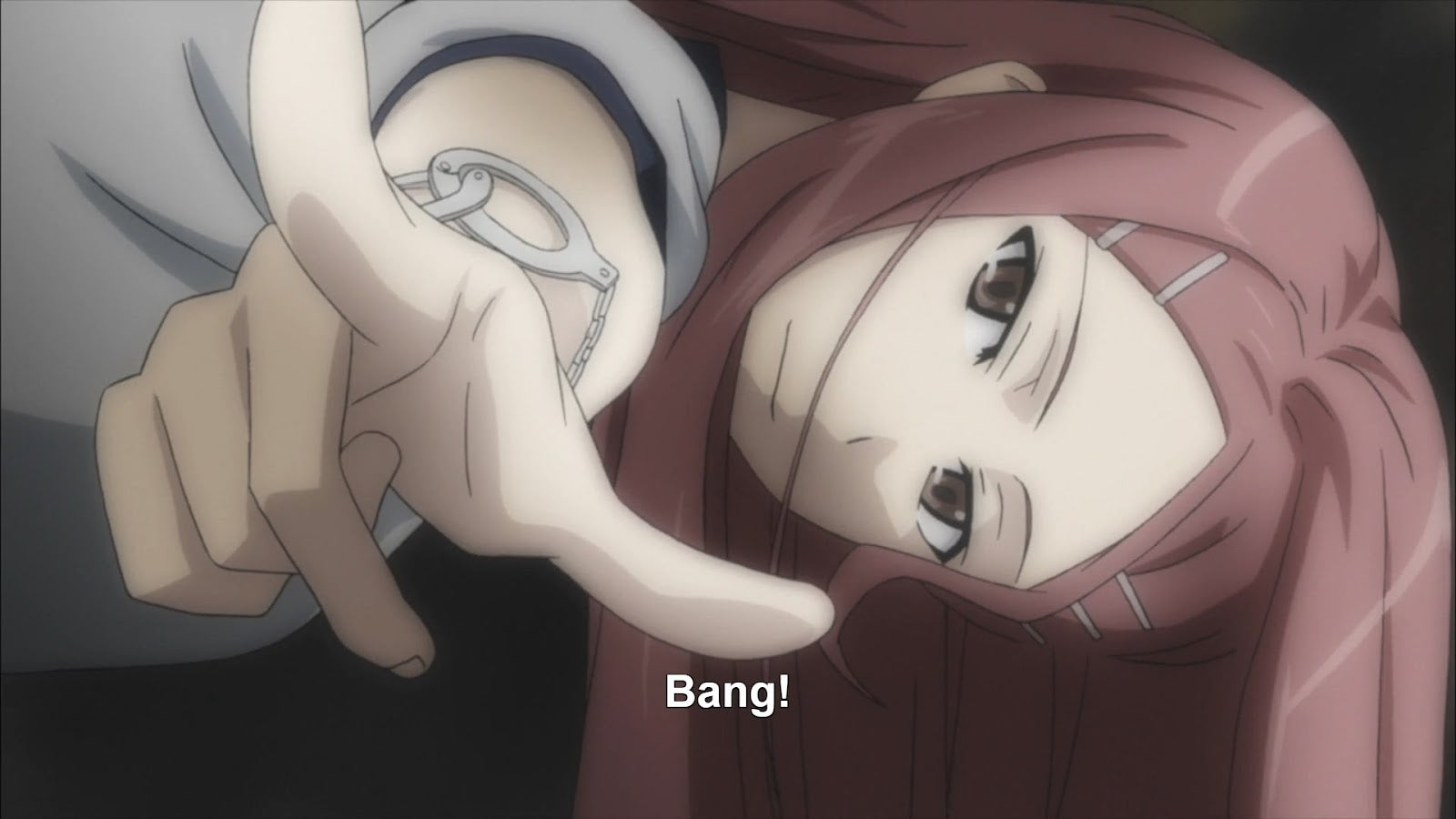
No matter your family's spiritual or religious beliefs or lack thereof, some of you might remember having a spirit, guardian angel, or imaginary friend when you were a kid. It seemed my imaginary friend was real when I was a kid and helped me with my projects and dreams; as I got older, it seemed to disappear, but did it ever really go away?
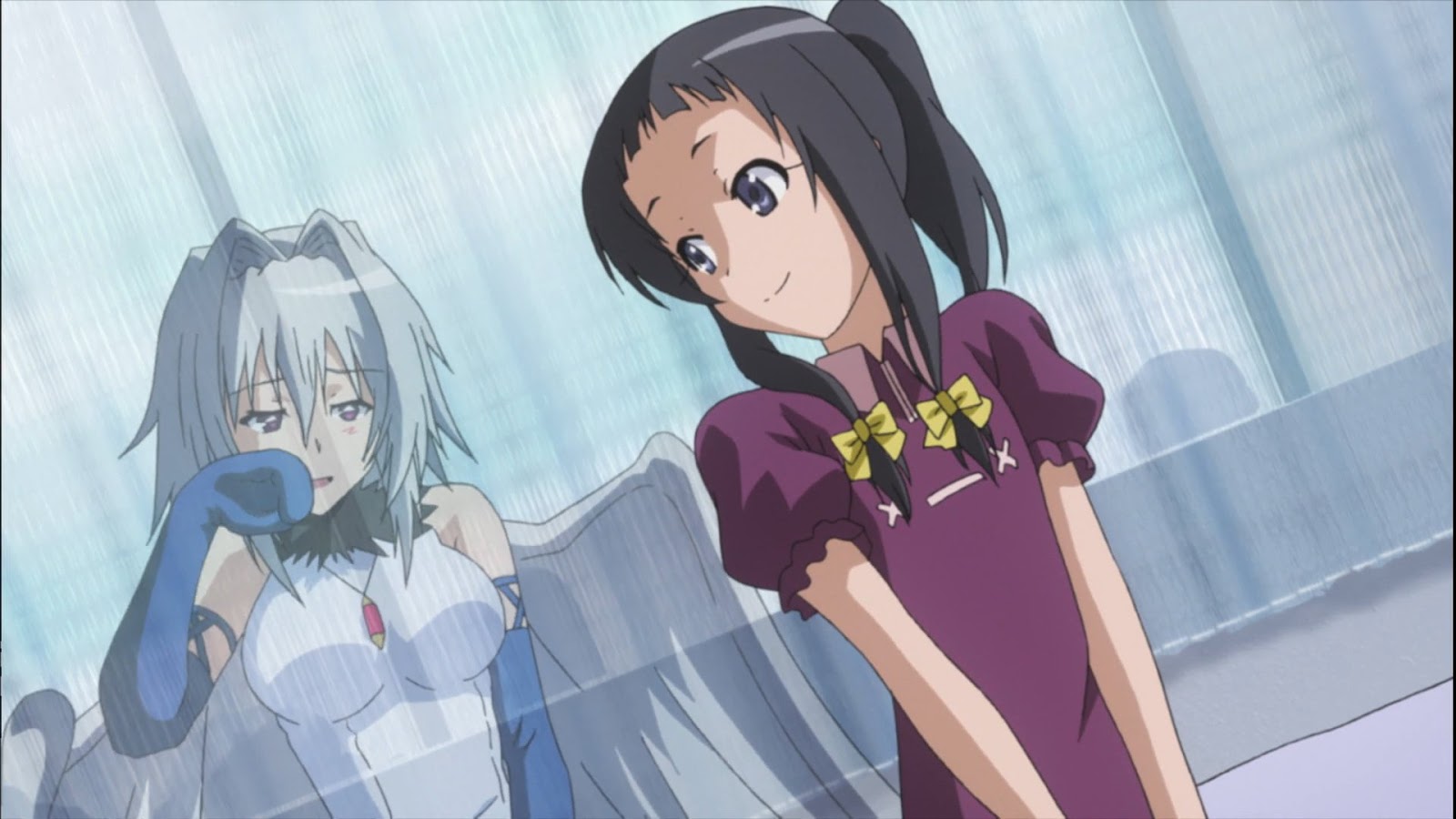
When I review my dreams and nightmares, cats have never been a part of them. I do not know why; it could be because I cannot perceive an individual's aura or because I am wearing glasses. But in Yumeji’s case, he probably wishes cats weren’t a part of his nighttime routine.
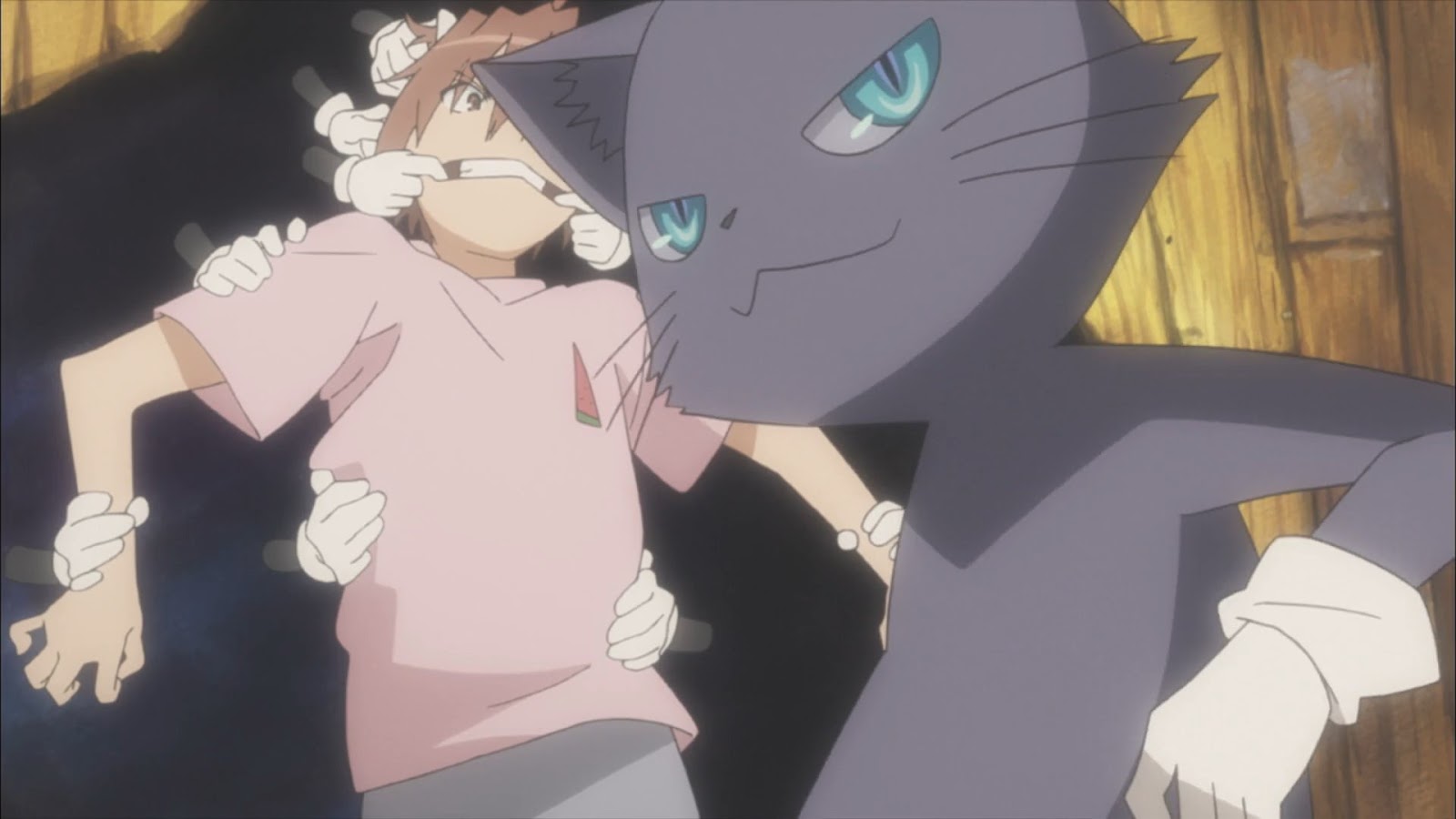
Nevertheless, when Yumeji is transported into an ethereal world with flying fish bones and a rolling yet opened can of cat food, it is safe to say this will be another one of those nights. Chased and harassed by a group of marauding felines that I would say is straight out of a Looney Tunes or early Tom and Jerry cartoon. The crow of a rooster saves our protagonist from capture before it can happen. It's time to wake up!!

The anime series Dream Eater Merry (Yumekui Merry) is based on the manga of the same name. Yoshitaka Ushiki wrote and illustrated the manga, which ran serially in Houbunsha's seinen manga magazine Manga Time Kirara Forward from 2008 to 2020 and culminated in 24 volumes. It also has a Spin-Off prequel, a three-chapter manga called Kagefumi Merry (Shadow Stomper Merry).
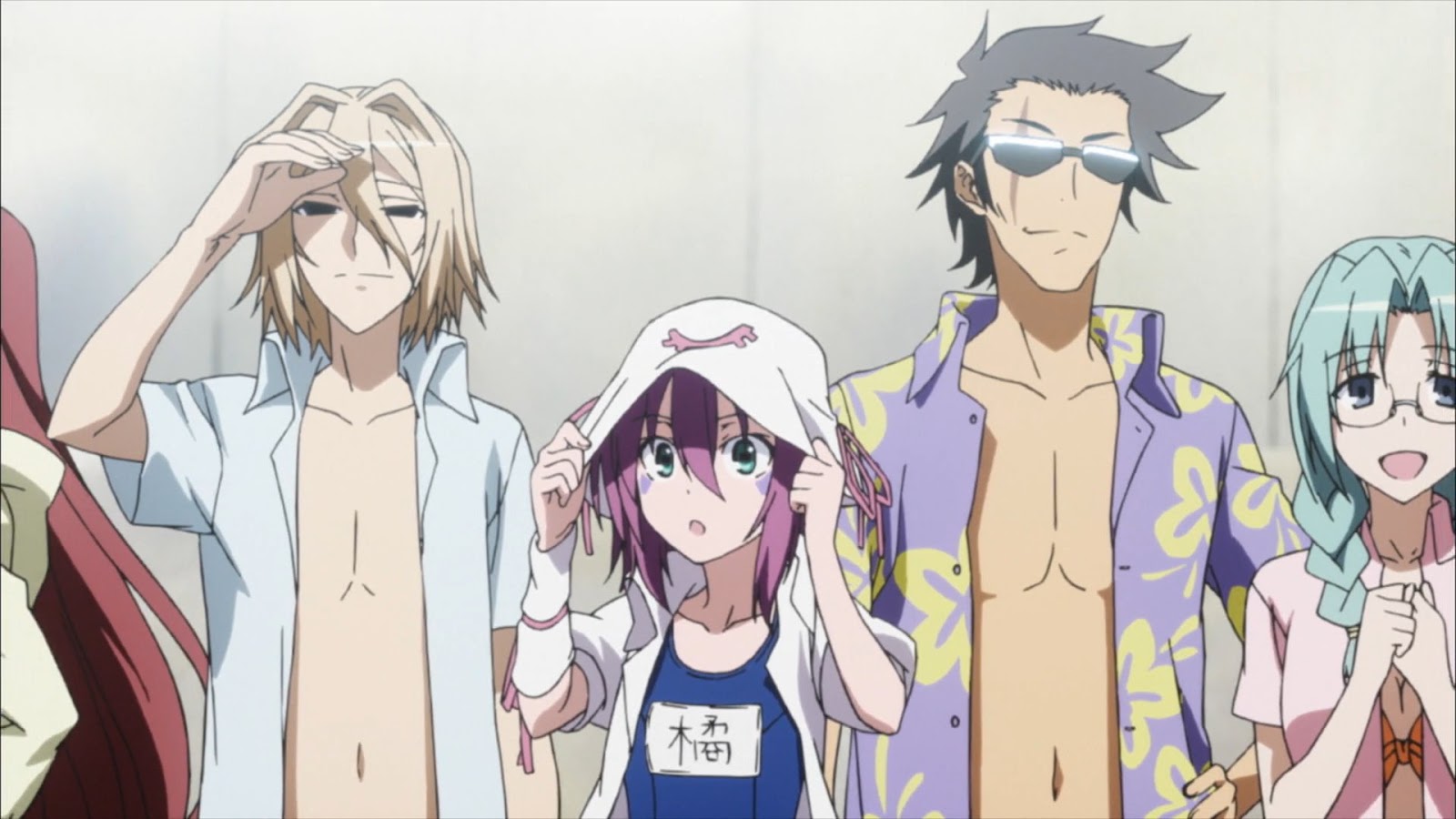
The 13-episode anime adaptation, produced by J.C. Staff, aired in Japan from January 7 to April 8, 2011. Shigeyasu Yamauchi directed the anime, Hideki Shirane oversaw the scripts, and Masahiro Fujii handled the character design. Pony Canyon, TBS, Magic Capsule, Houbunsha, and RAY produced the series Sentai Filmworks licensed for North American release.
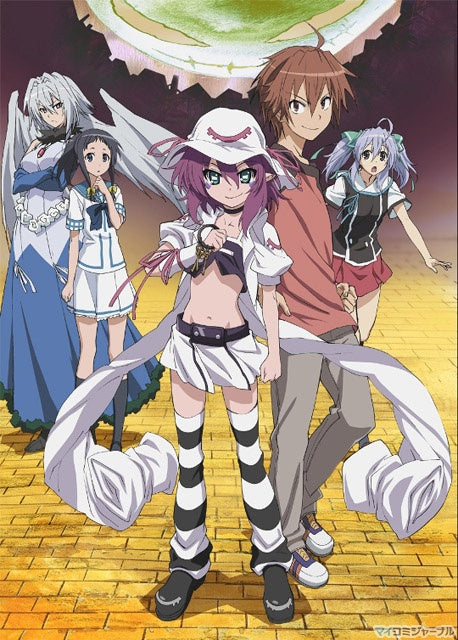
Shigeyasu Yamauchi is best known for Casshern Sins, and he has directed several Dragon Ball Z films, including Fusion Reborn, Broly: The Second Coming, and Broly: The Legendary Super Saiyan. Hideki Shirane's other works are "Queen's Blade: The Exiled Virgin," "The Qwaser of Stigmata," "Is This a Zombie?" and "Date A Live." Finally, Masahiro Fujii has worked on "The Familiar of Zero," "Shakugan no Shana," "Strike Witches," "Blade Dance of the Elementalers," and "Wise Man's Grandchild."
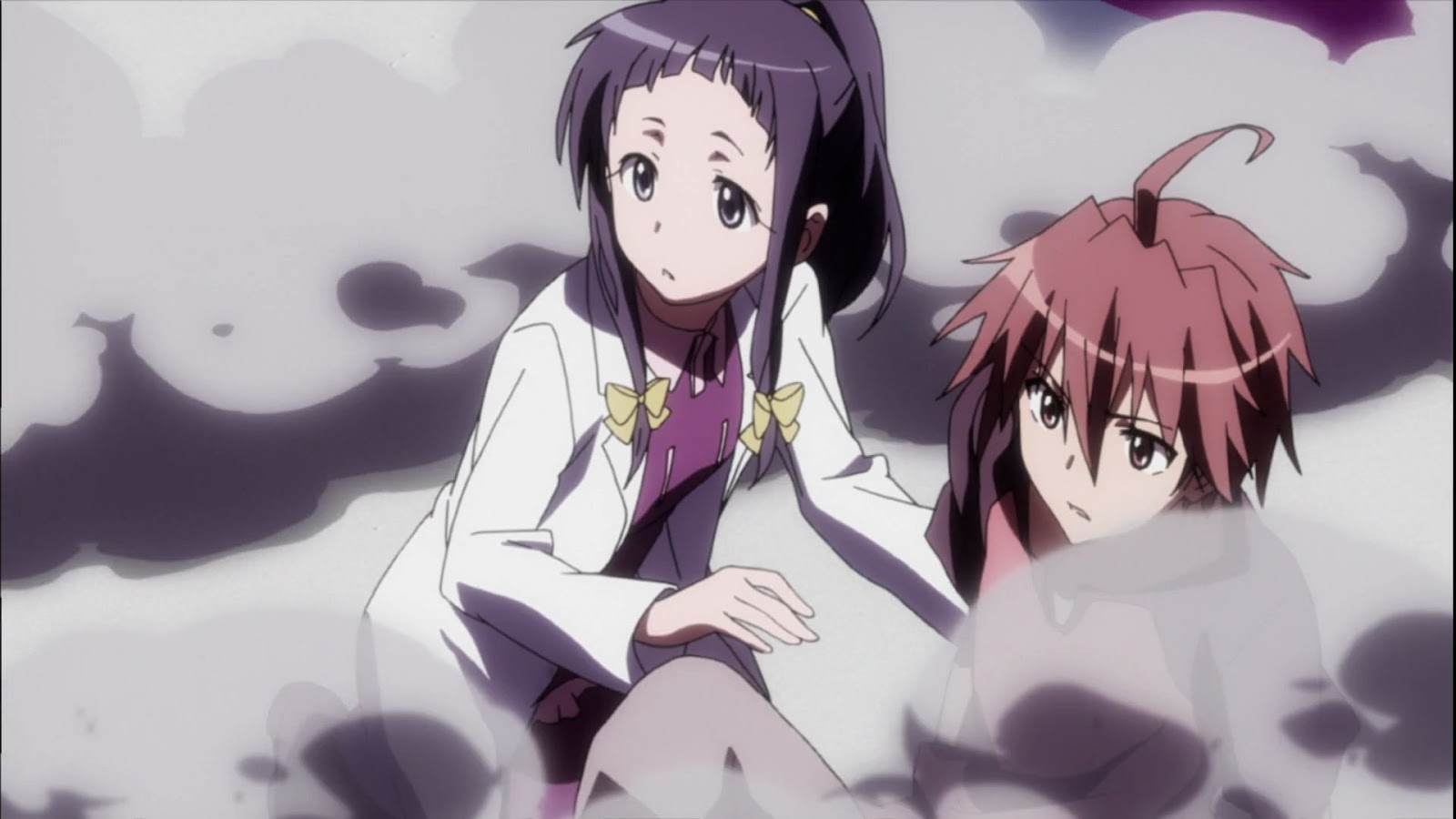
So, who is Yumeji? He’s not someone of great importance. He's just your average high school kid, immersed in the literature club and surrounded by auras, some good and some bad. What are the bad auras? Ah, we’ll get to that, but the auras, which look like color blindness tests, surround all humans, and Yumeji has a knack for reading them. He can predict the kind of dream one will have just by placing his hand over his eye like a telescope.
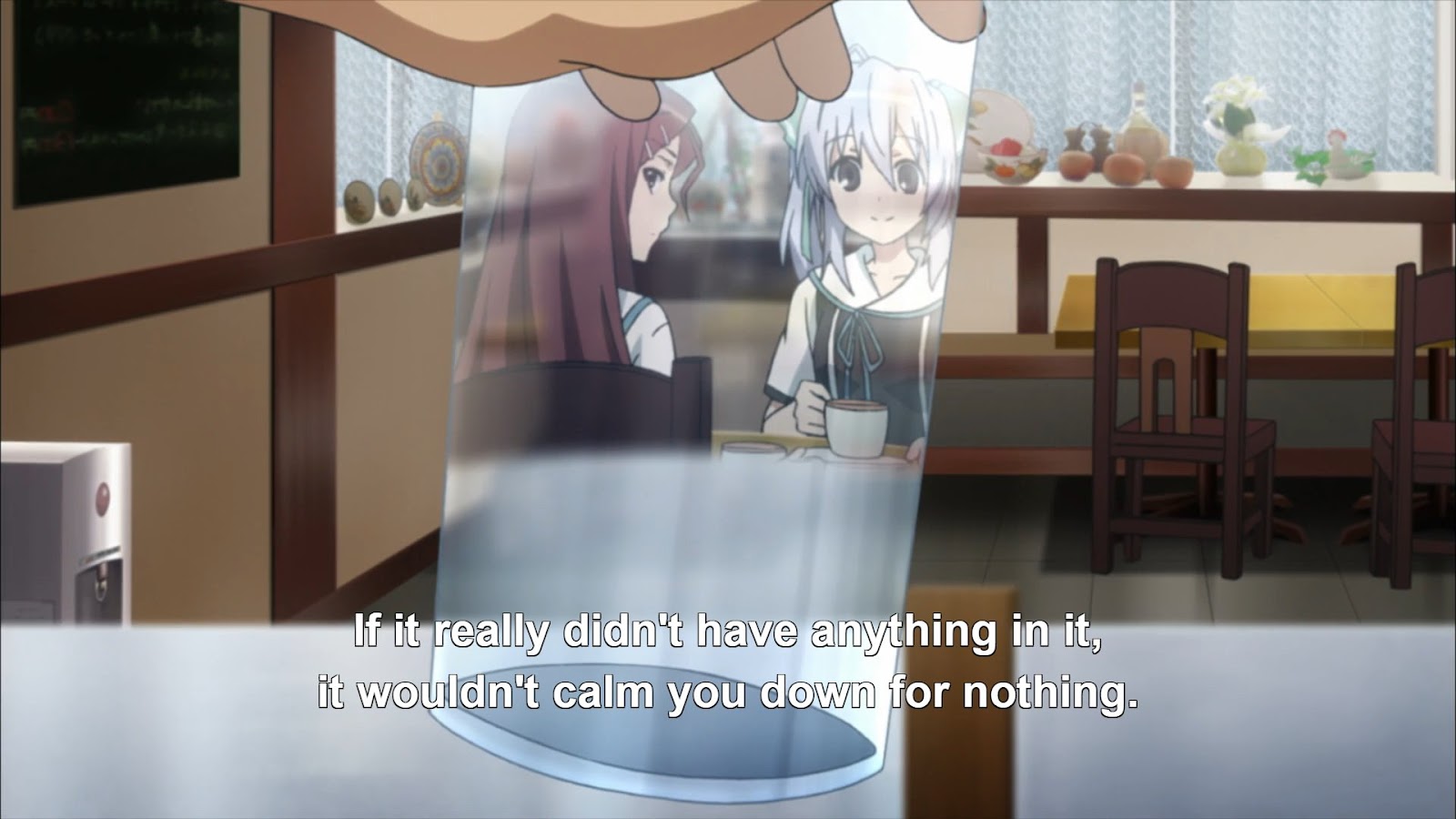
The anime never explains how he obtained his ability, but we’ll just go with it. You’ll have to read the manga for more reasons than one. So about those evil auras, Yumeji can see when a person will have a bad dream or nightmare. Later, he can see if a Dream Demon has attached itself to a person or vessel. I’m getting ahead of myself a bit.
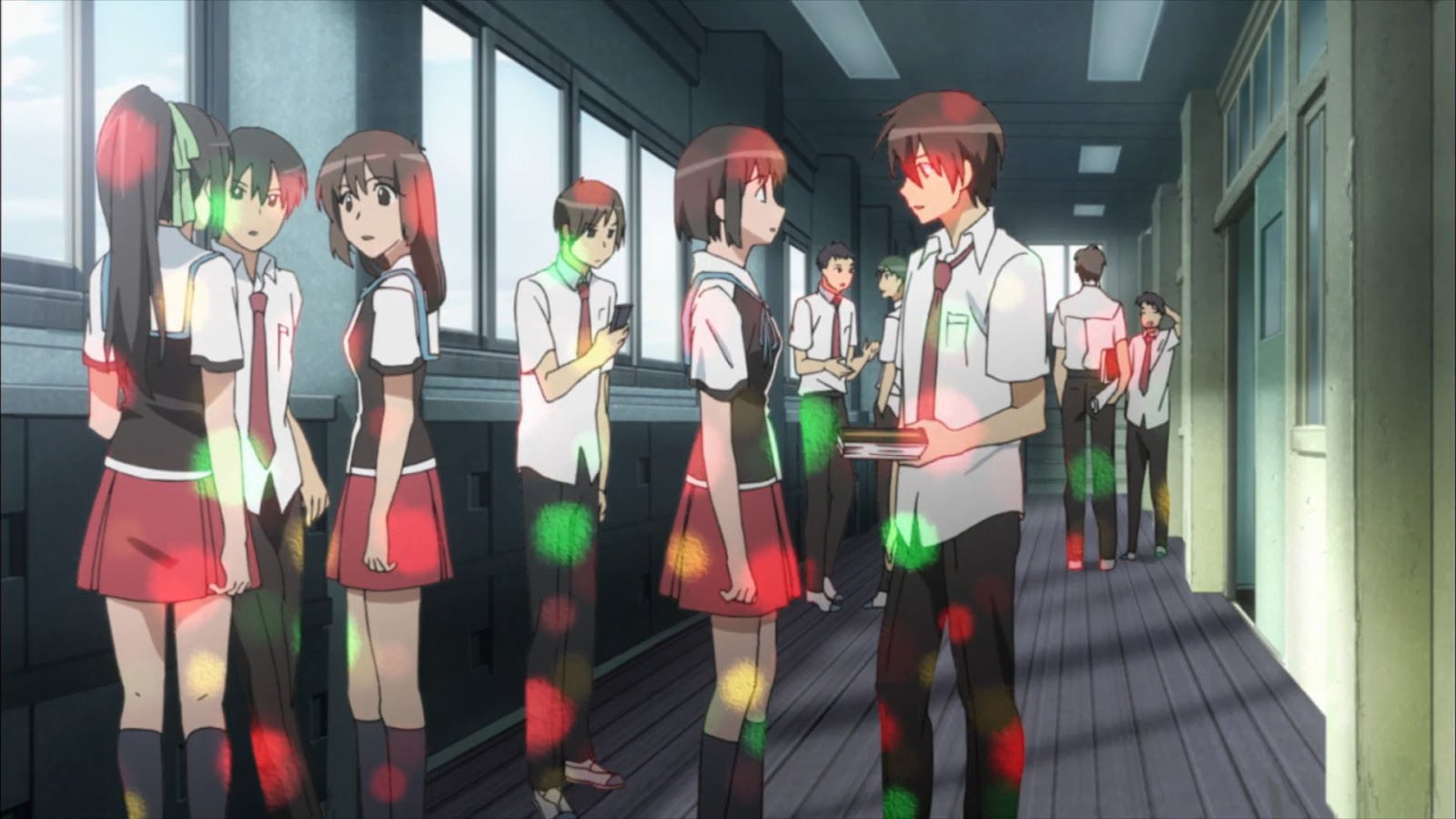
Dream Eater Merry initially starts episodic. As stated earlier, our protagonist, Yumeji, can see auras, including his own, by looking in a mirror, and tonight will be one of those nights. More cats. The good thing about dreams is that more is revealed over time, and we meet John Doe this time. Let's just say they paired the right character with the right voice. Jōji Nakata is excellent in this role, and that baritone voice caused immediate intrigue.
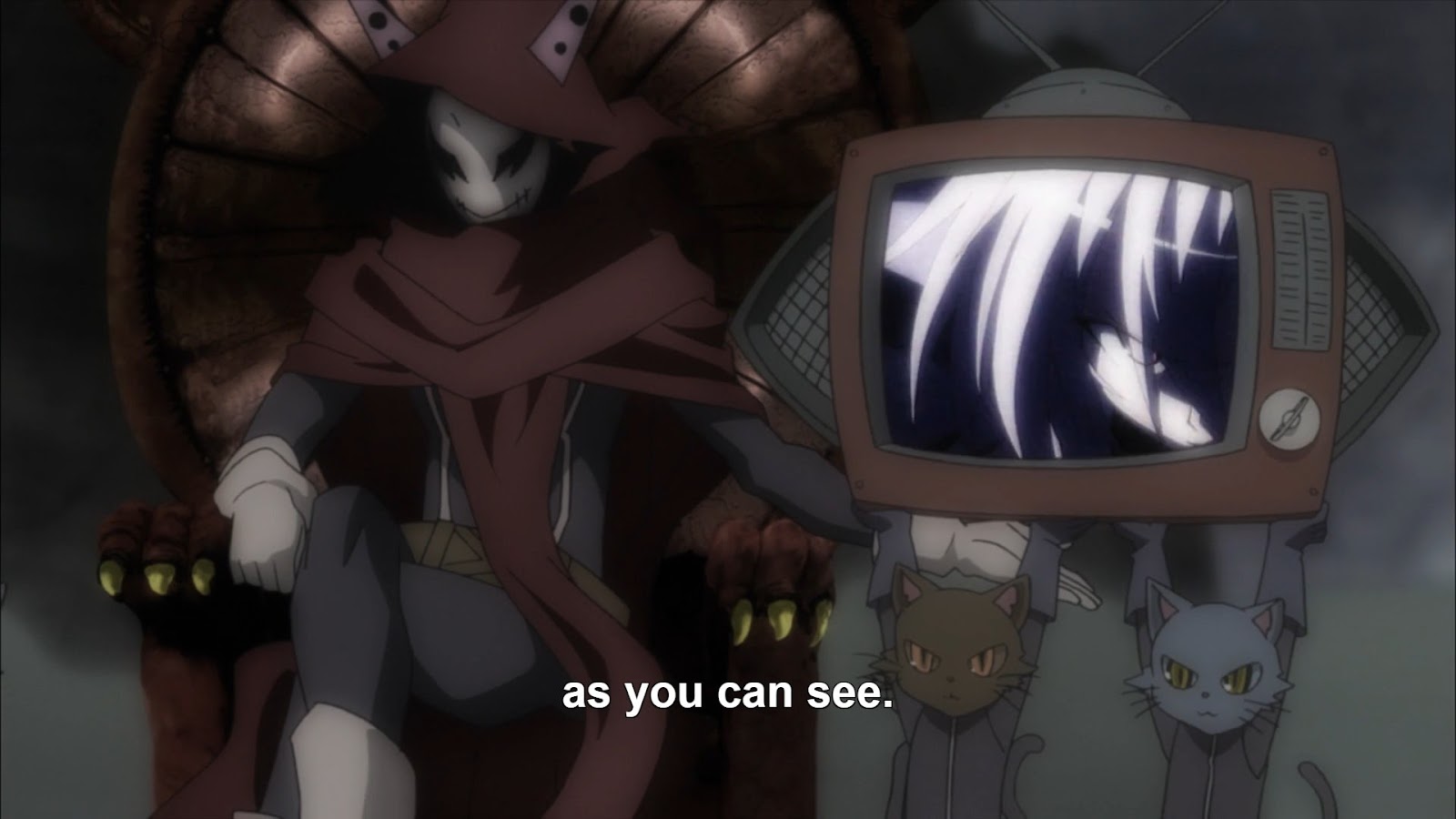
Introducing himself as John Doe, the Chaser, the leader of the feline army, and the ally of truth, he decides to pay an official visit using the power of Deja vu. Yes, Dream Demons can enter our dreams in several ways. Why? John Doe requires a vessel. People visit this dream world via dreams when they are asleep, deja vu, or daydreaming. A human vessel is necessary for Dream Demons to access the real world; this is where Yumeji comes in. But before John Doe can have his way, Merry Nightmare steps in, and in Anakin's words, “This is where the fun begins.”
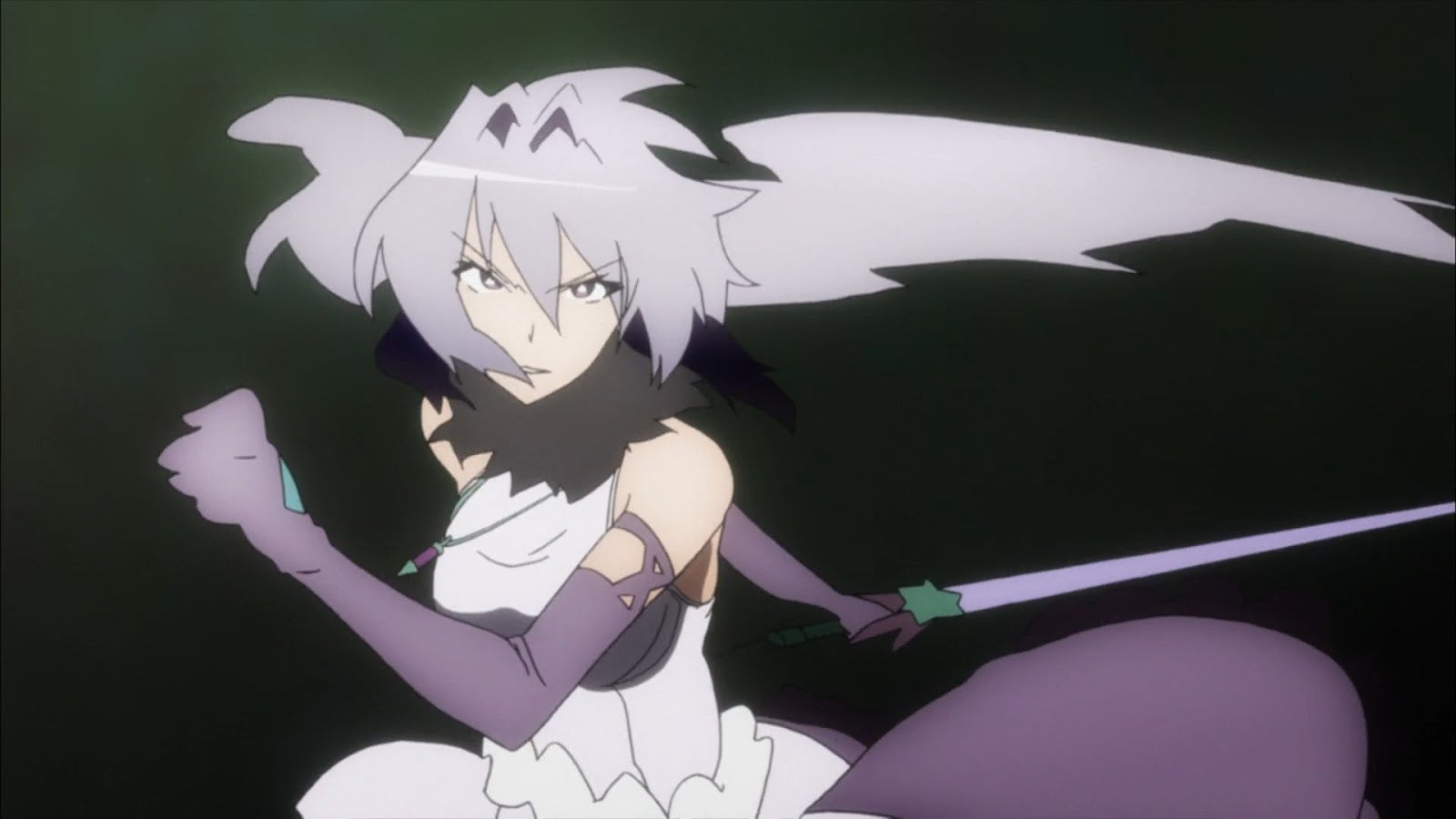
The pacing for the first episode is like that of a gazelle on steroids. It’s not rushed, but it moves swiftly. It’s well-animated, probably eclipsing the remainder of the series. It introduces us to most of the primary supporting characters who are a part of Yumeji’s world. Isana Tachibana is Yumeji’s childhood friend with whom he currently lives, as his parents are out of town on business. She is very protective of Yumeji and sometimes acts like his wife—Saki’s words, not mine.
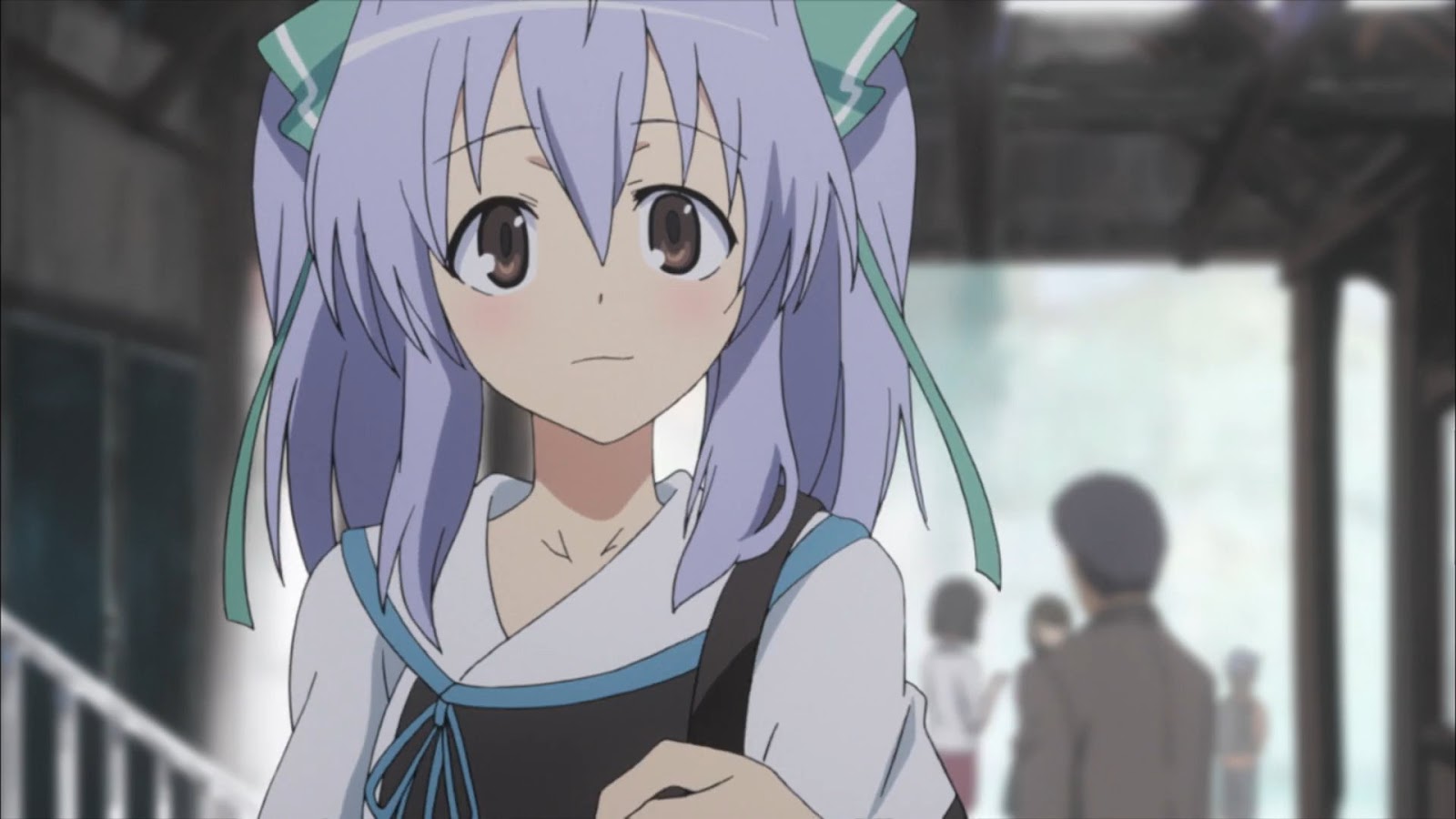
The two became friends years ago after a playground accident. When not in school, she works at her dad’s restaurant, the STO cafe. A bit bubbly and naive, it's a shame that, while she is a large part of the plot, she receives little development outside of the resident cheerleader.
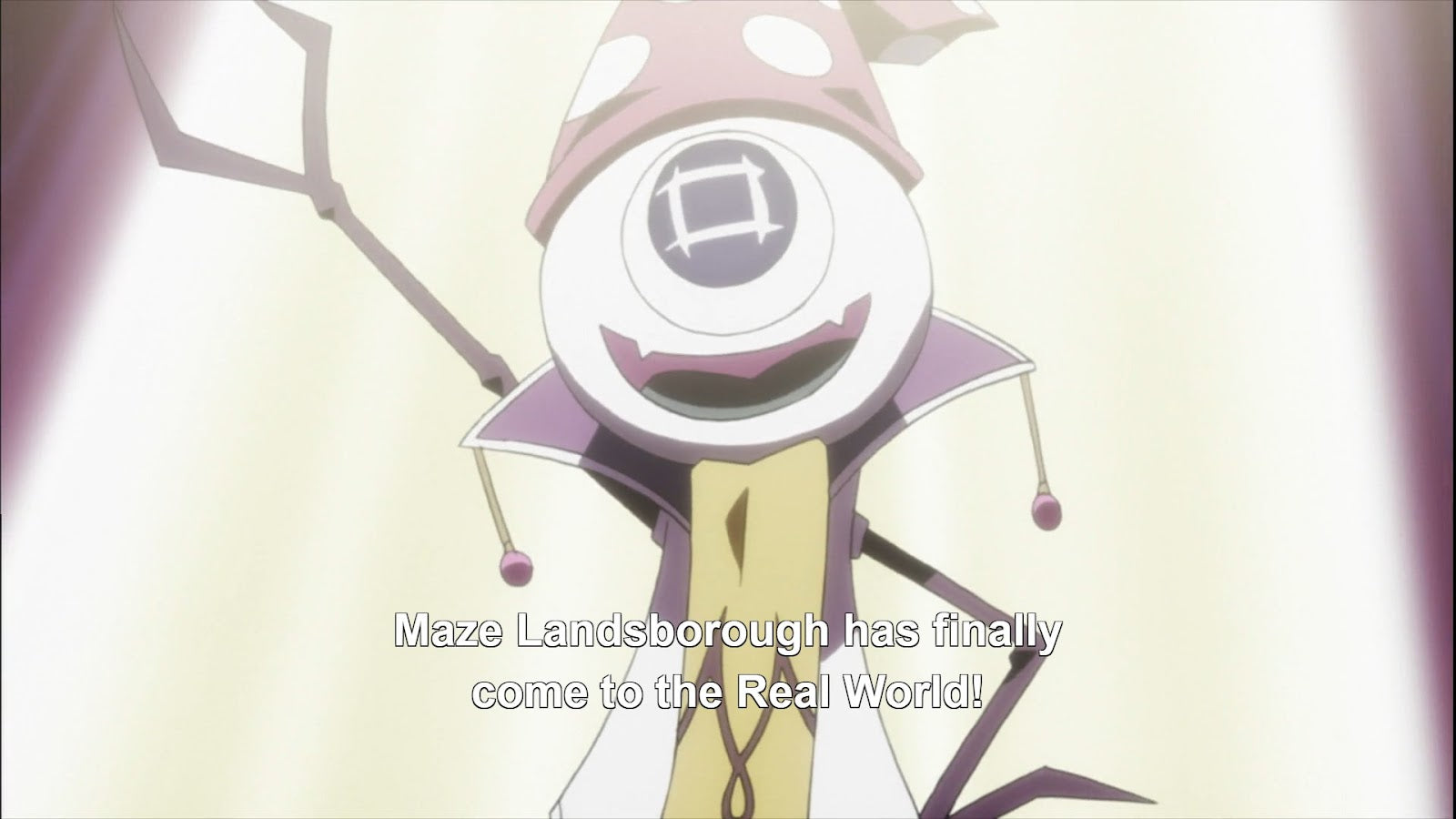
Dreams are a significant part of the anime, and Isana dreams of becoming an artist. This is a plus, as her love interest, Yumeji, wants to be a writer. I see Naoko Takeuchi and Yoshihiro Togashi vibes in these two; no, it never develops that far, nor does the budding relationship of her friends Takateru Akiyanagi and Saki Kirishima. Although Saki thinks to herself in episode 10, Takateru, or Taka for short, may have also ignited her pilot light.
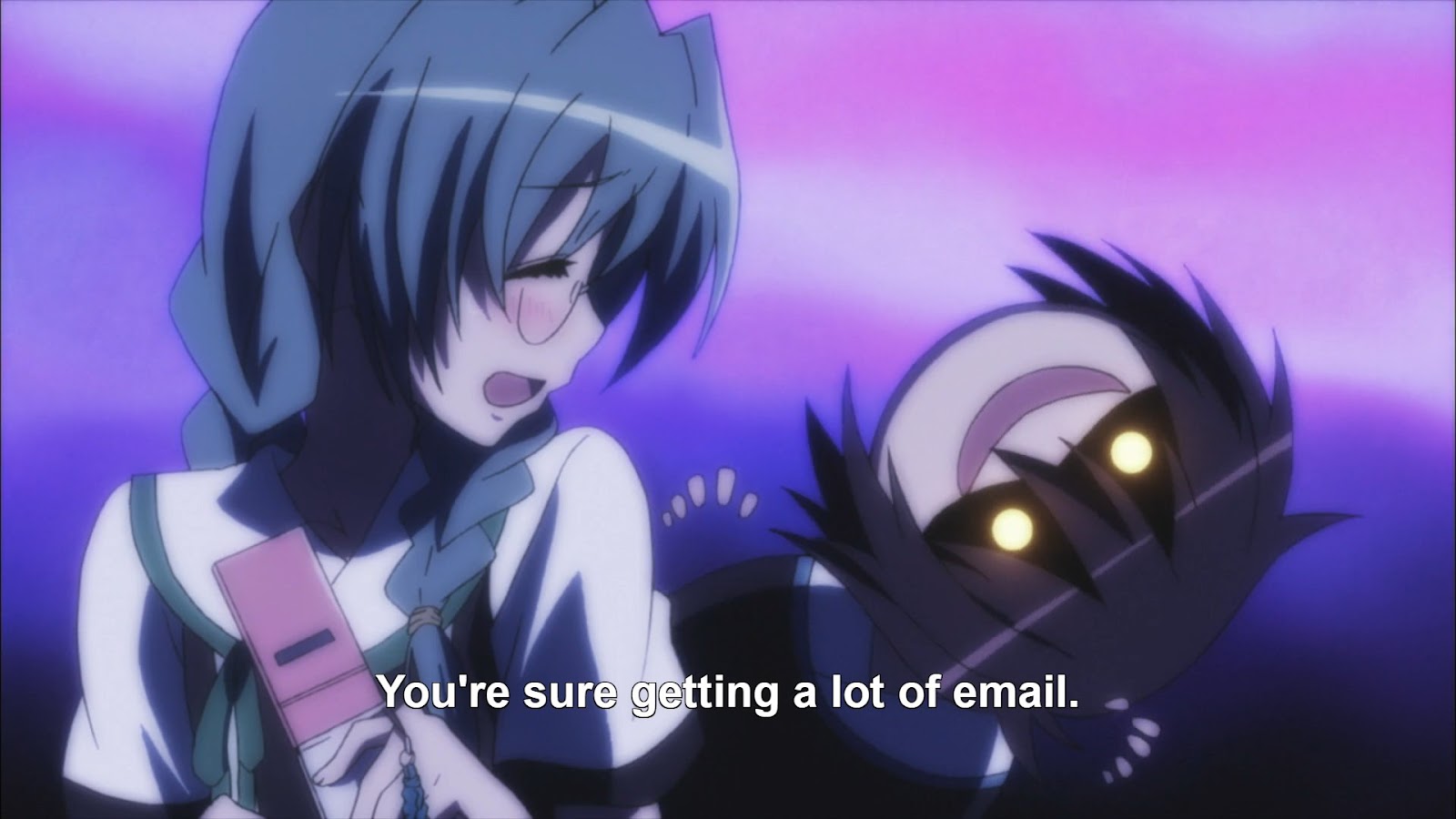
I guess her turning red wasn’t a giveaway! Ironically, this is a running undertone of this anime, as not even club president Mei Hoshino could ever indeed find love. Sorry, Chris Evergreen. The running undertone is that some dreams are waiting to be filled, and some are filled only to be shattered. Again, I’m looking at you, Chris. To clarify, while not entirely at fault, Merry did intervene and return you to the land of dreams.
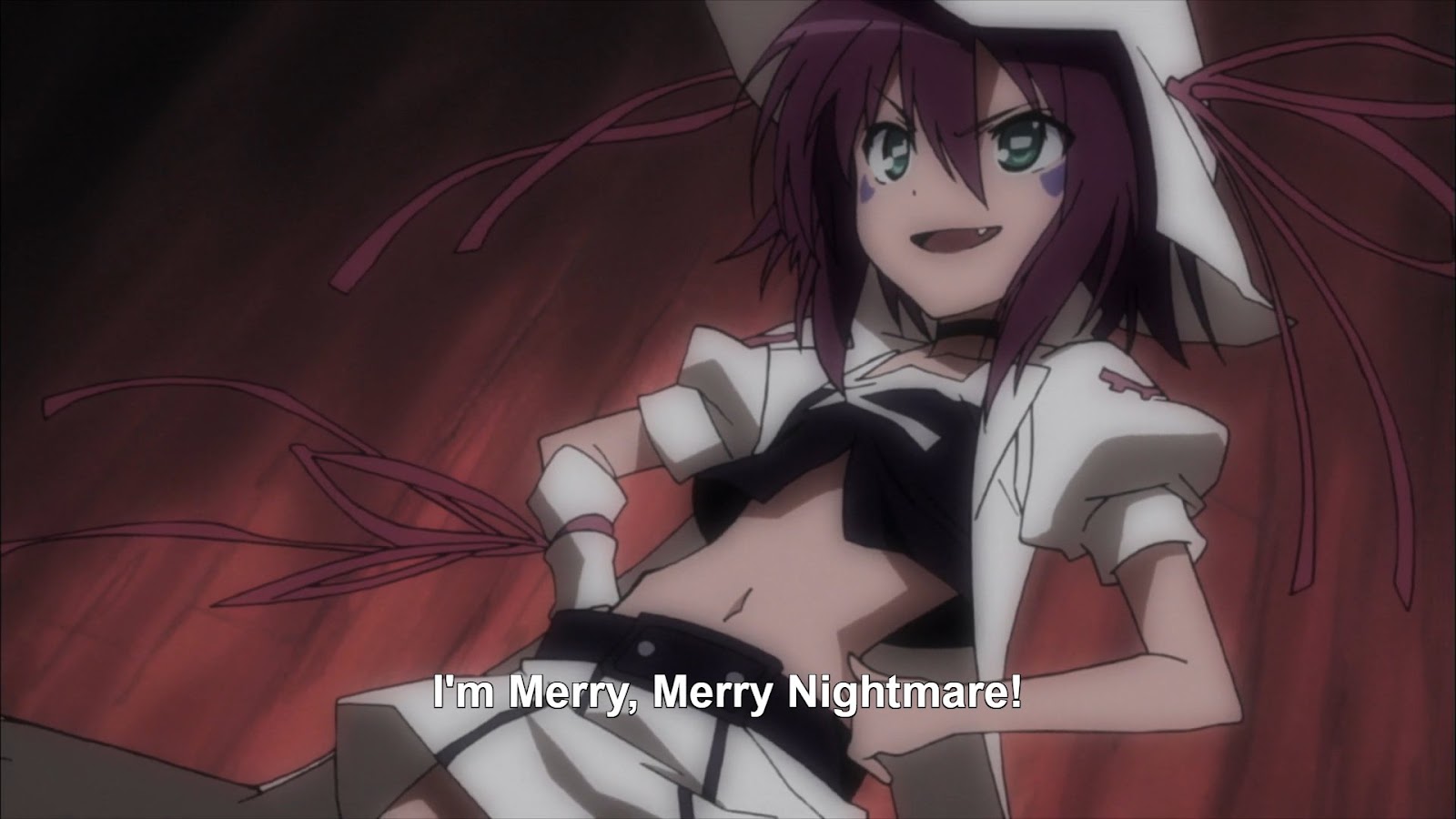
So, who exactly is Merry? No one knows. The anime omits some crucial details about her origin. But we meet her right before Yumeji goes all daydreaming on us and meets John Doe. Merry is sleeping in a tree, and our heroine, who has a habit of attracting crows, is violently awakened, falling from the tree and landing on Yumeji. If you watch anime, you will already know how she landed.
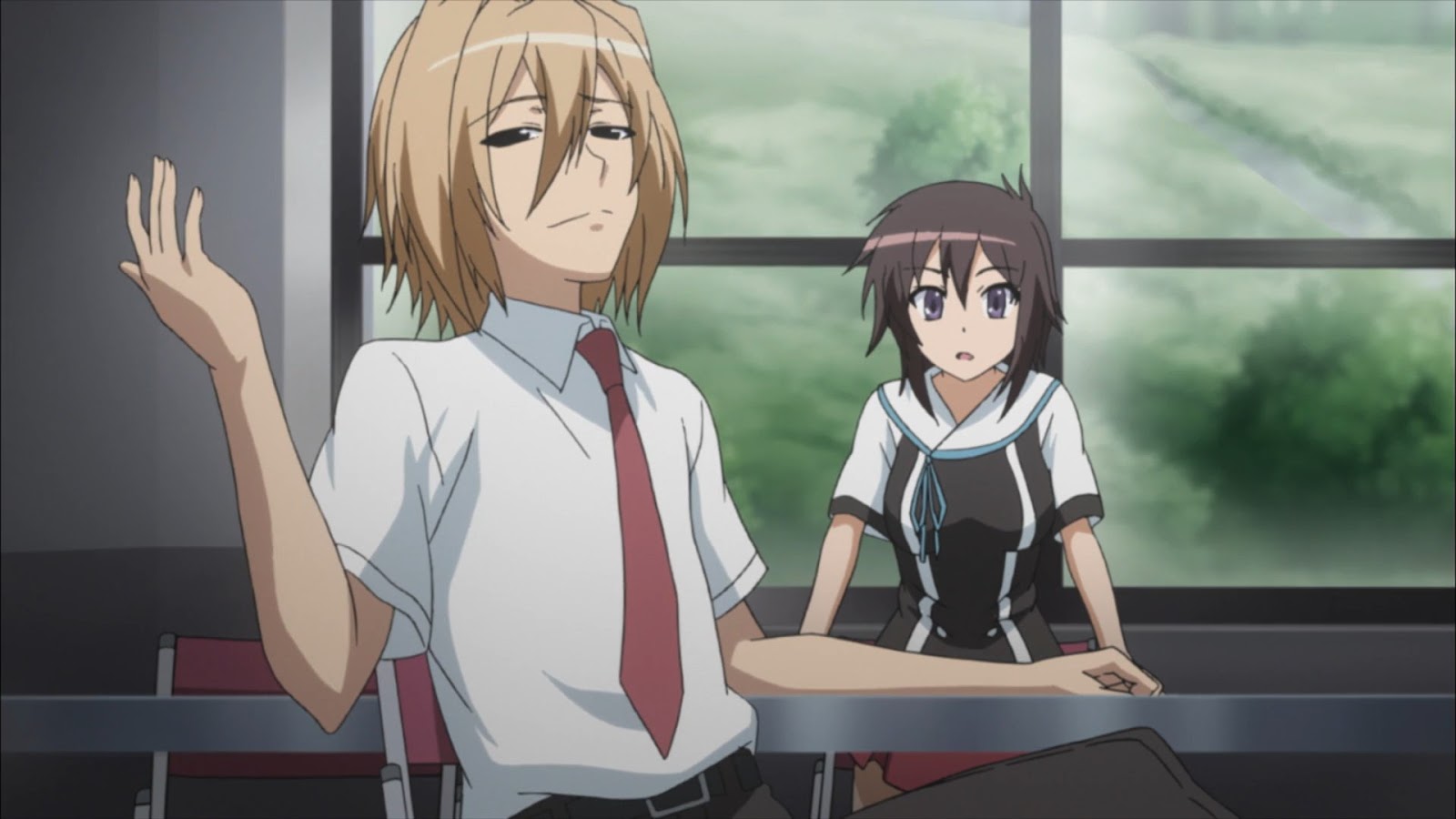
Yumeji fits the usual good guy hero tropes, so he takes her back to Isana’s house to live, allowing Isana to introduce Merry to Donuts and move in as a possible love interest. Yumeji falls into the harem trope as well.
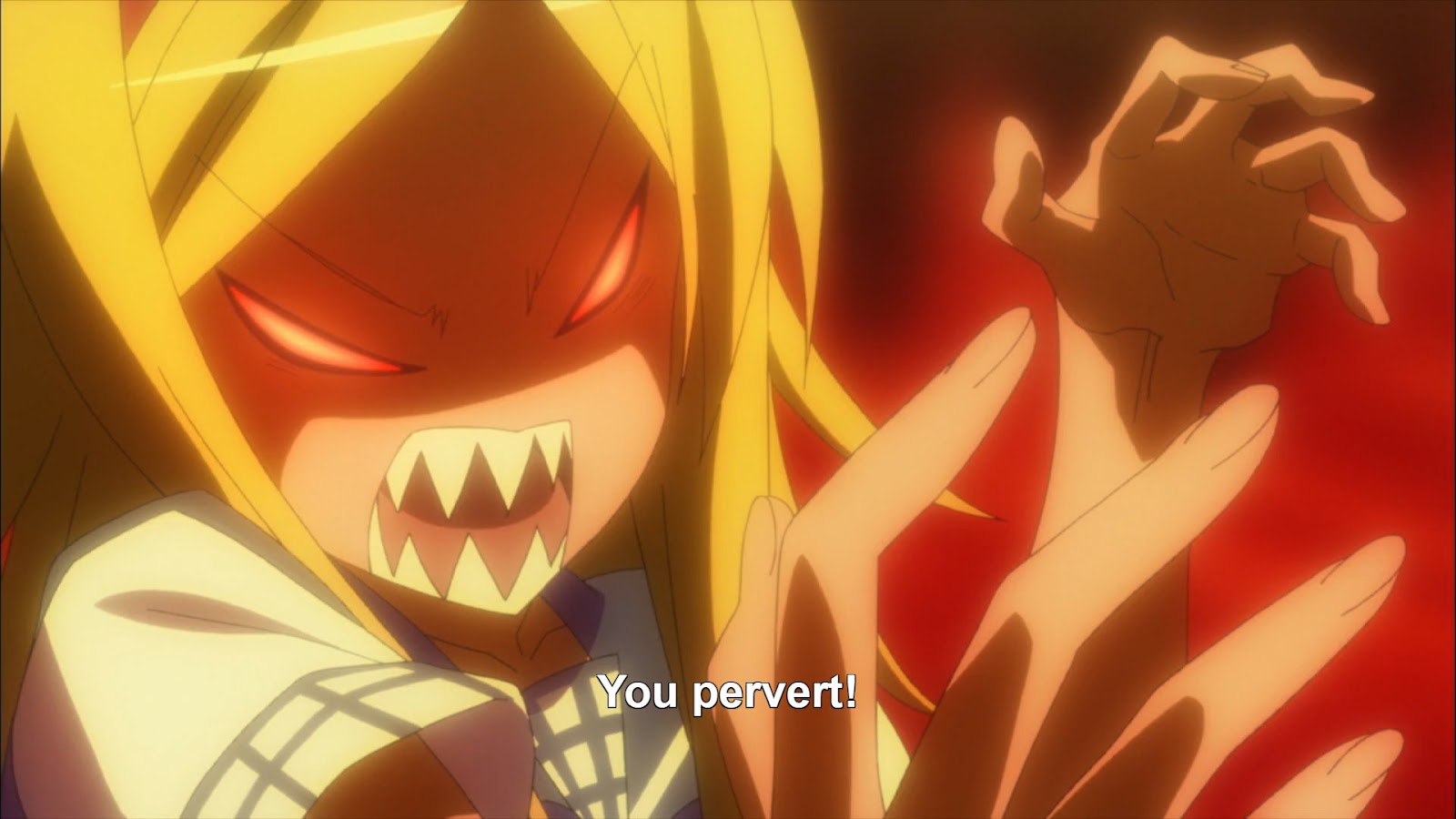
The Dream Eater Merry anime leaves out much of the original manga, which is unfortunate because the manga teases an intriguing backstory for the main characters, Merry and Yumeji. The manga explains why Yumeji can enter the Dream World almost at will, while Merry can enter the living world without a vessel.
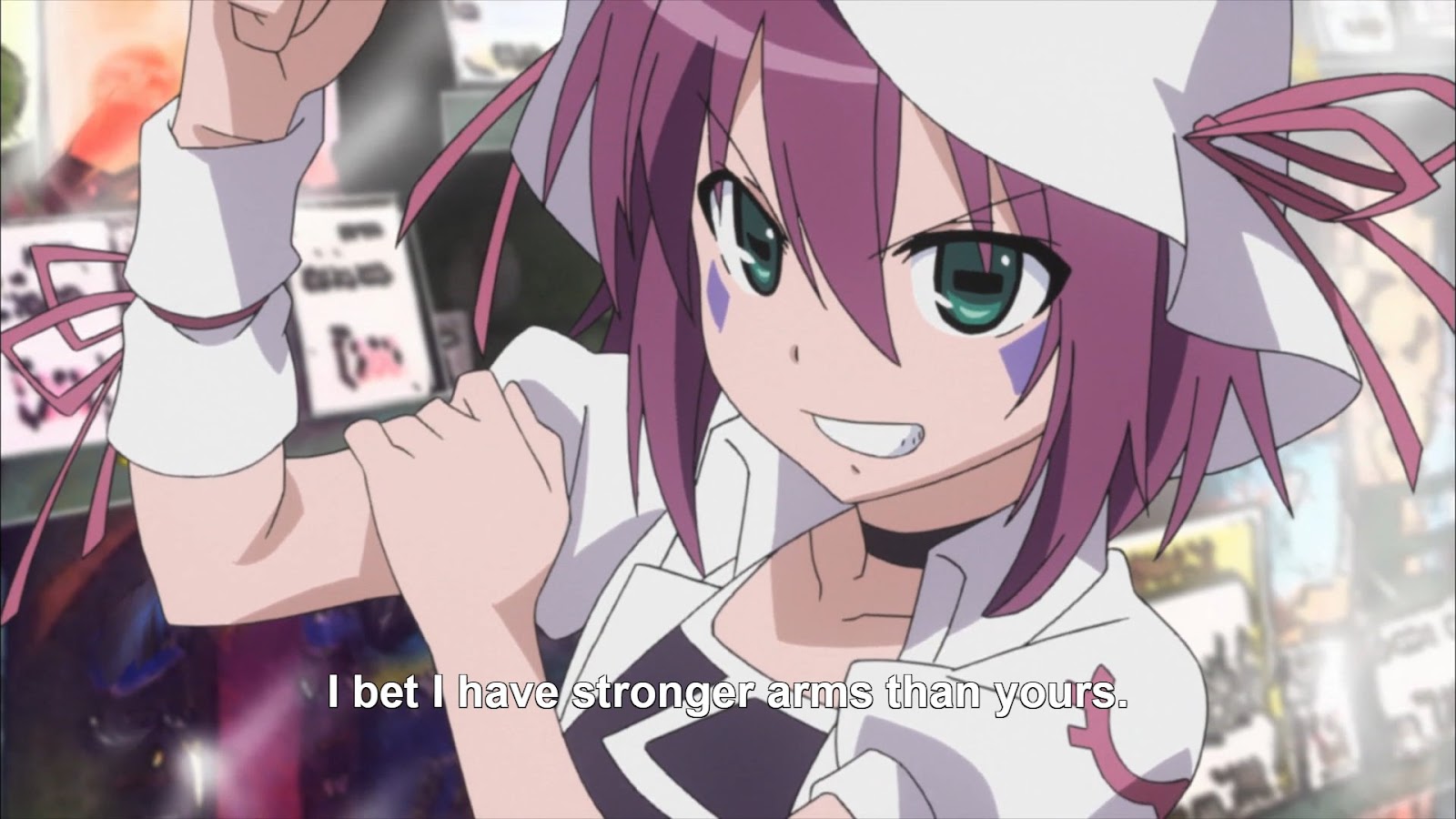
Yumeji promises to help Merry return to her Dream World home. As the story progresses, we discover the true nature of dream demons and how they affect the humans they possess. Episode 3, which tells the tale of Minato Kisaragi and her dream demon, Ichima, is an excellent illustration of the negative aspects of dream demons. Ichima took advantage of her naivety and loneliness.

She is portrayed as an outcast who is more susceptible to embracing the dream demons, similar to numerous other human vessels. Although not definitive, it is reasonable to assume that a significant number of the potential vessels had mental health issues that were not readily apparent at first glance.
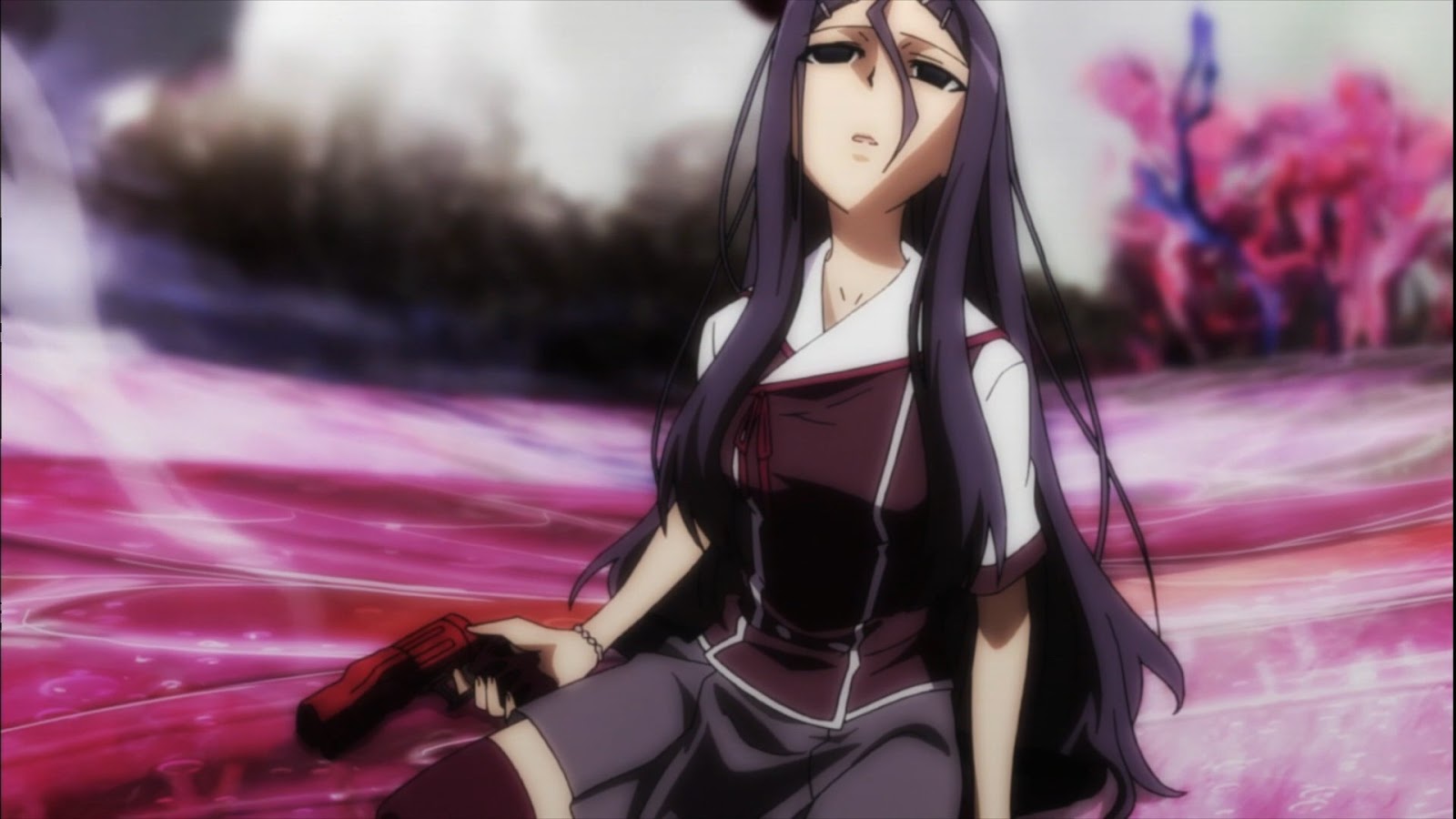
While some episodes are considered filler, they actually provide important character development and worldbuilding for the dream realm. These "filler" episodes introduce new characters like Lestion (Leon), Chizuru Kawanami, and Ryouta Iijima. The episodic formula can slow down the overarching plot's advancement. However, it gives opportunities to flesh out the characters and the dream world lore.
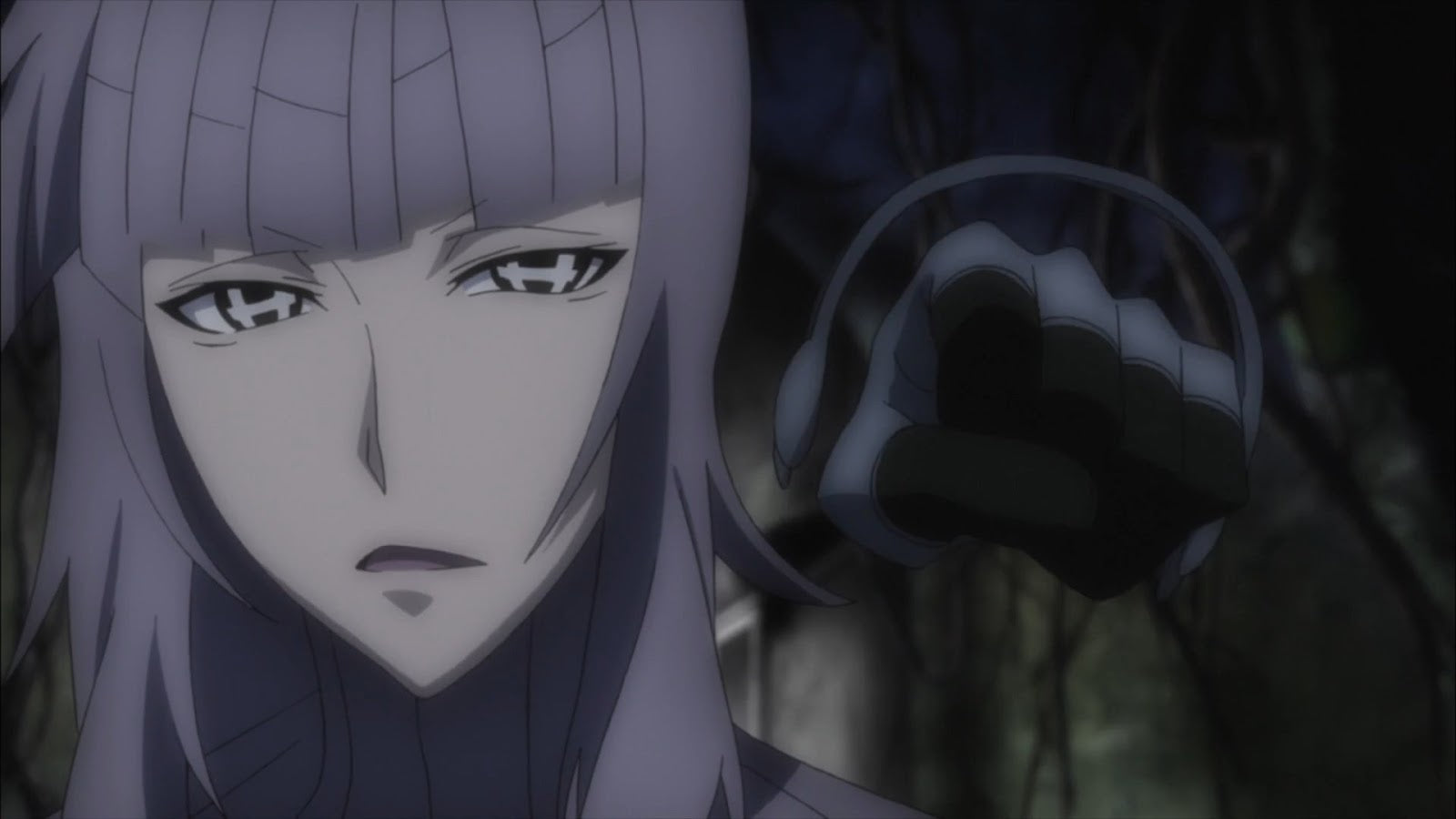
While the anime mentions the manga's antagonist, Pharos Hercules, he appears sparingly, leaving the story feeling incomplete. What the viewer does receive is the one and only "Ocean of Trees," Mistilteinn. She’s alluded to in episode two and becomes the overarching villain in the anime’s final episodes.
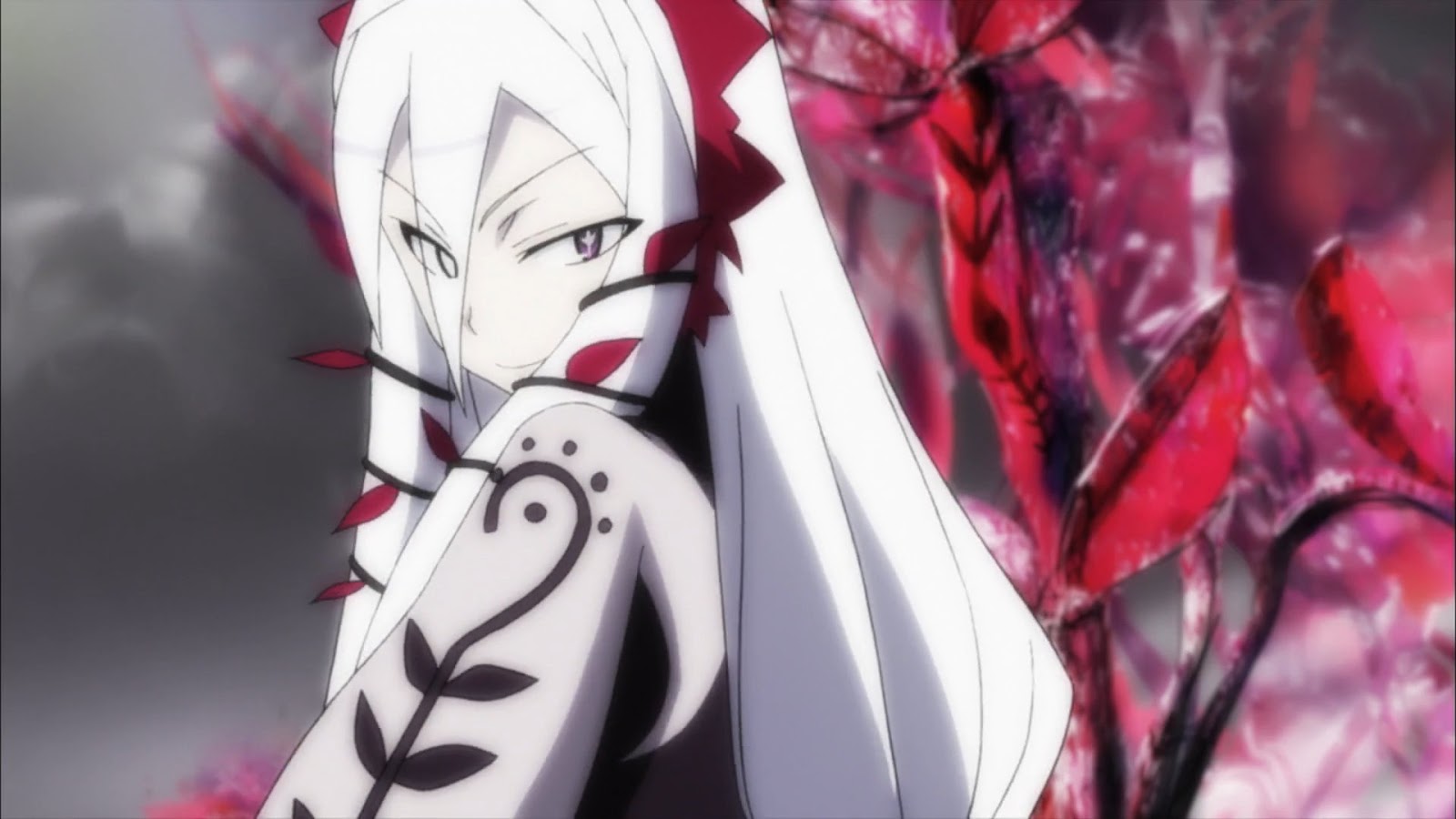
Don’t dismiss her as a cheap knockoff. Her name is a play on Norse mythology, and according to anime lore, even Pharos Hercules holds her abilities in high regard.
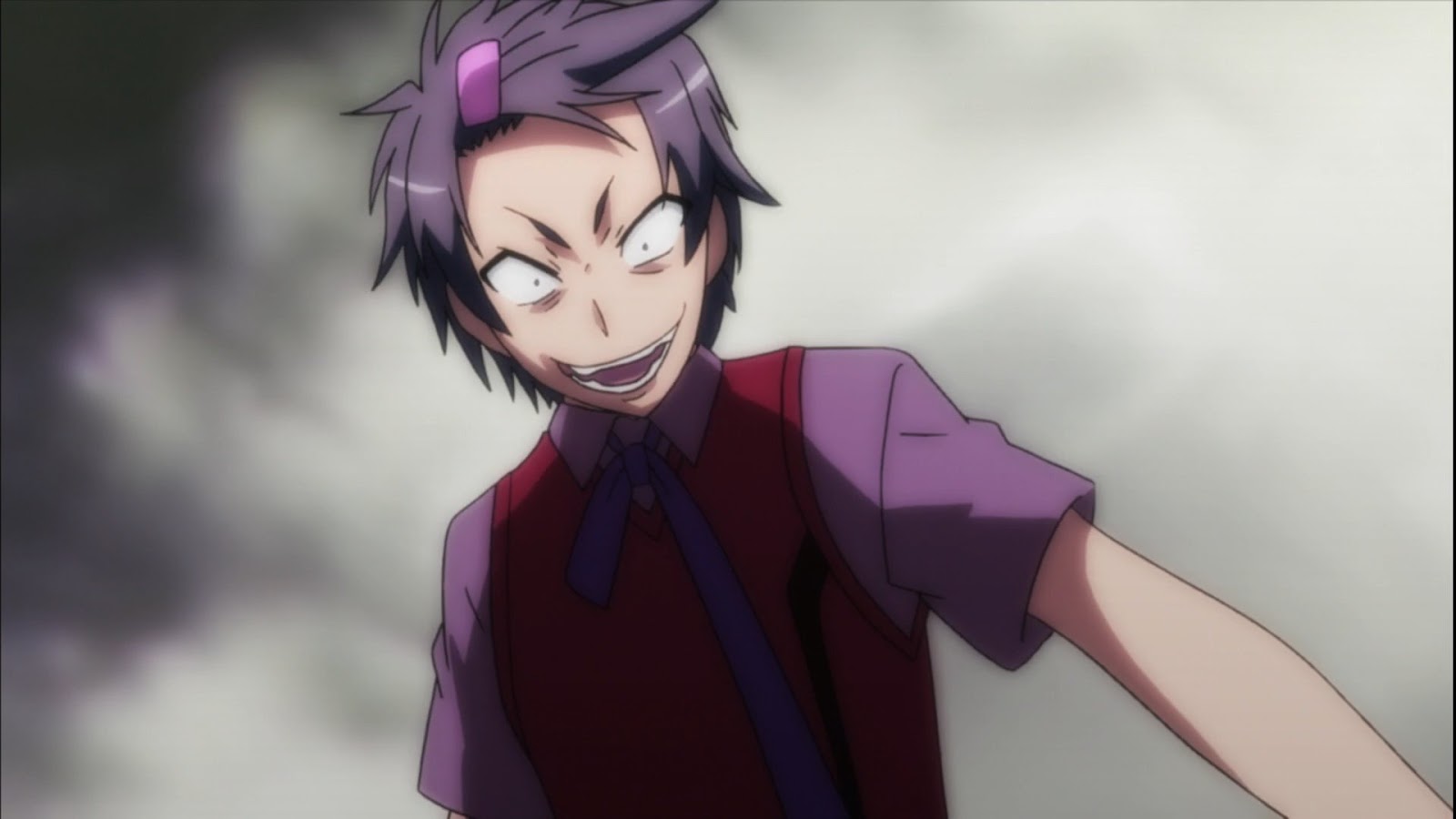
So, who is she? Very briefly, she is the Dream Demon working behind the scenes, and at her will, she violently sends dream demons to unsuspecting vessels. Don’t expect her to be nice; she lacks loyalty or remorse. She has one agenda: to crush the dreams of the vessels she acquires. Once those dreams are destroyed, humans become almost zombie-like, having lost all motivation. Ryota Iijima, a guidance counselor and possibly the only person with a similar ideological foundation, aids her. He has a similar agenda and a fetish for demons, I guess.
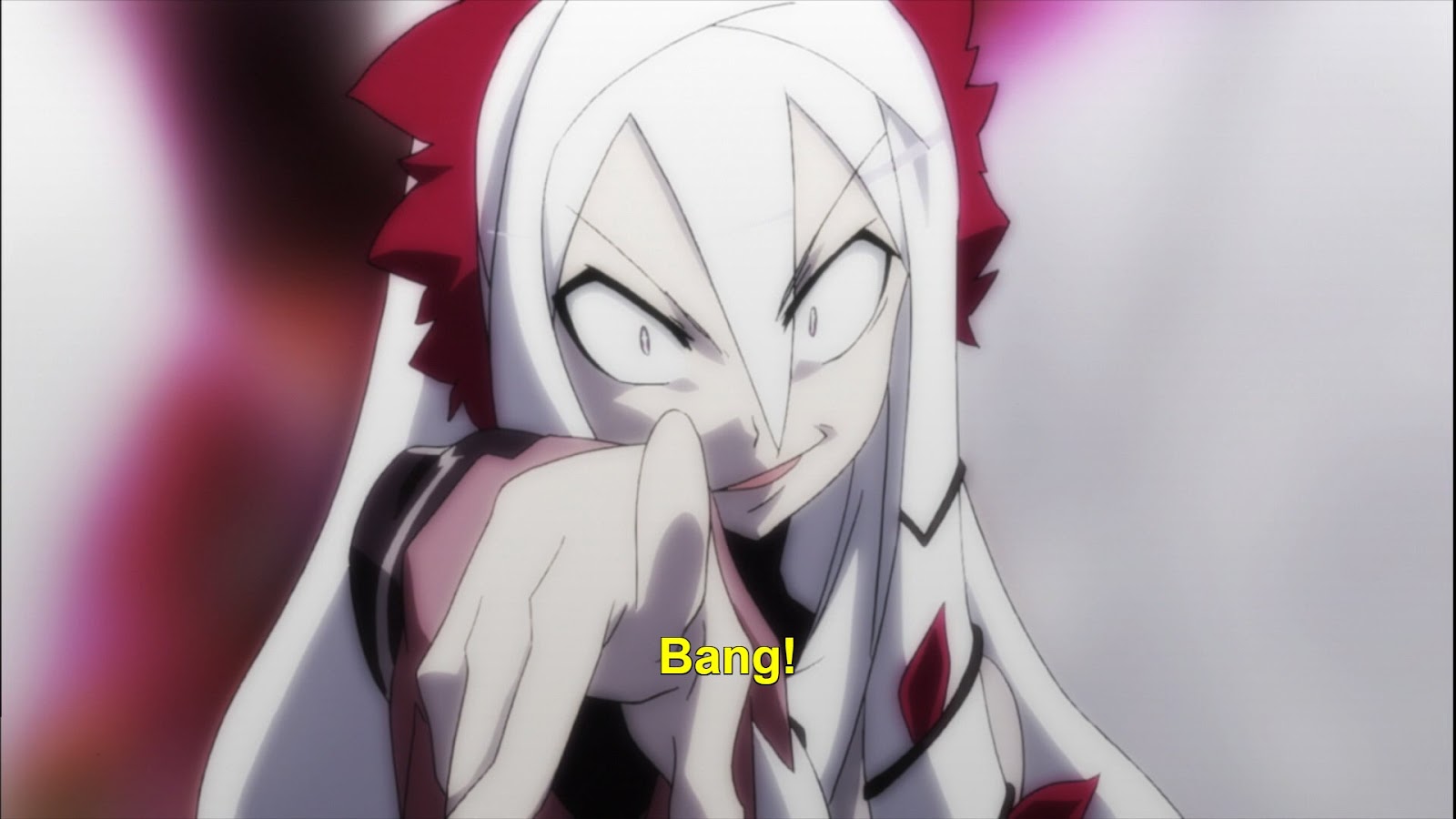
As the anime crescendos to an end, the remaining pieces, Engi Three-Piece and her vessel Yui Kōnagi, also enter the stage. While Yui’s motivation for accepting Engi seems juvenile, it's a plot device for Engi to enter the living world to seek out Pharos and avenge her lost sister.
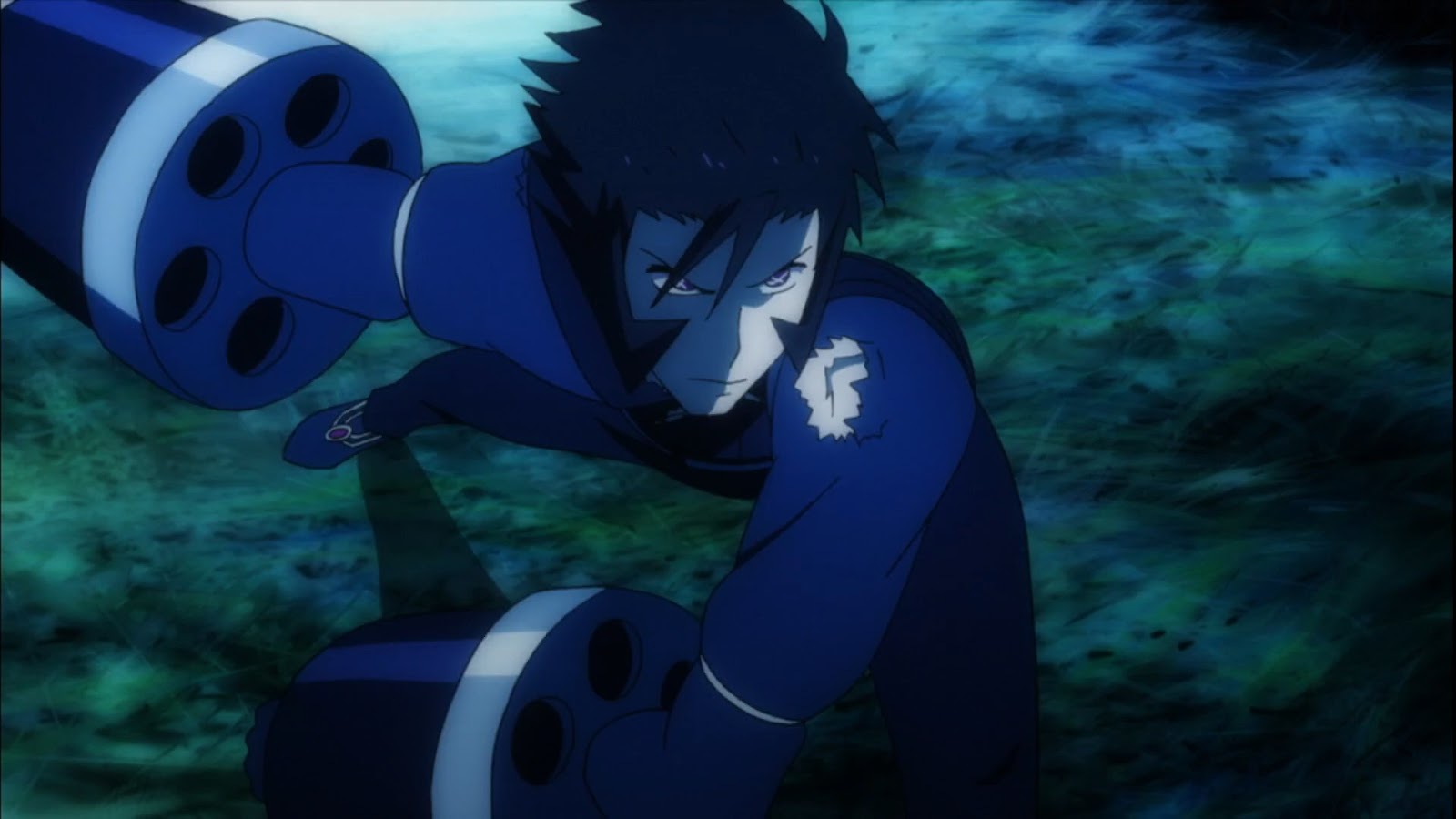
The living world's light temporarily blinded her sister Patti, who then fell prey to Pharos' "only mentioned" agenda of taking over the living world. It may appear that a lot is going on. Still, everything leads to the end, with all of the pieces at play, along with anime-only characters Chizuru and Lestion, to an ending that, while satisfying, felt rushed.
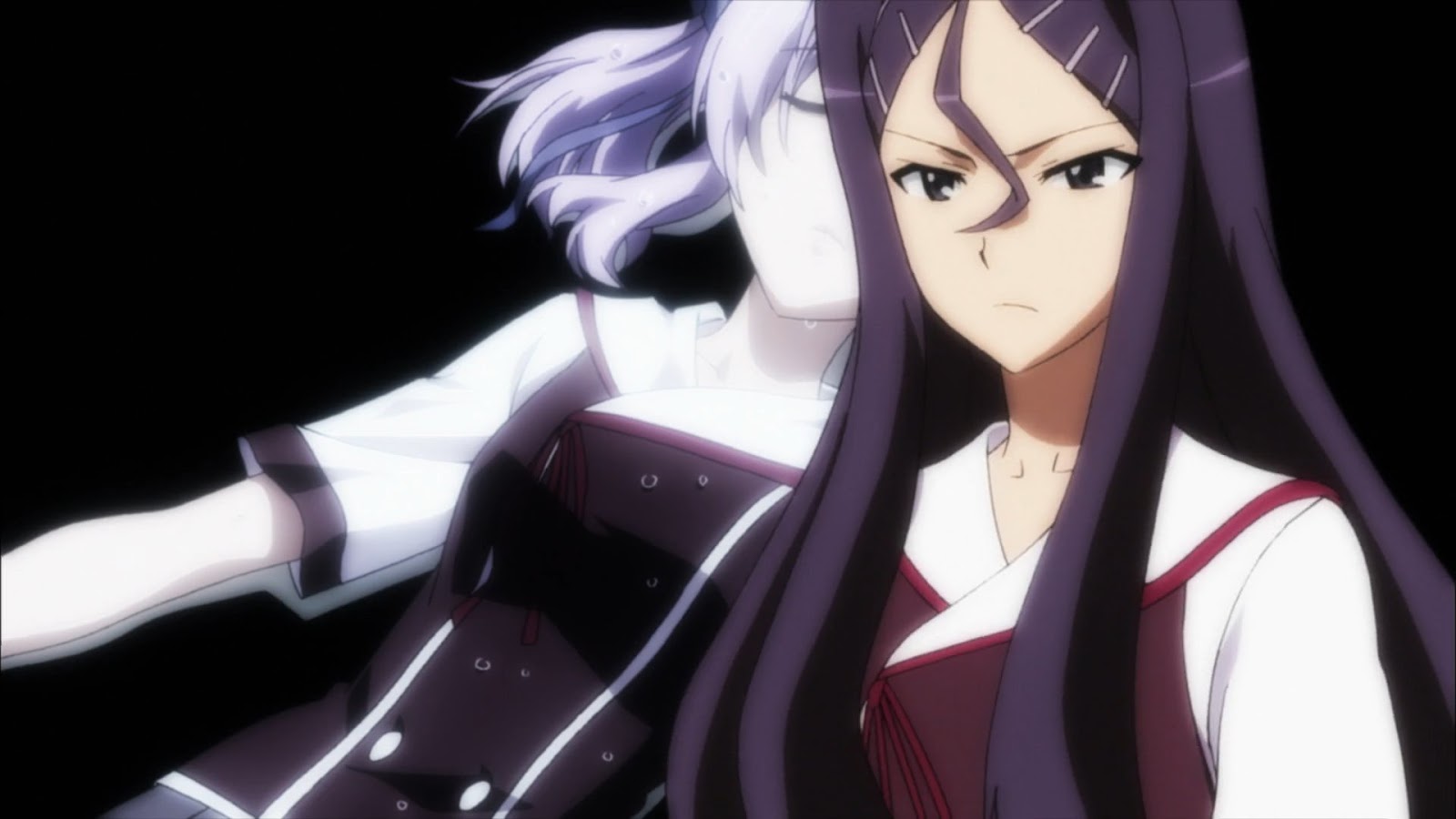
That said, I must say that J.C. Staff did an excellent job animating this anime. Its use of 2D and 3D overlap and its use of backgrounds that look like they came out of a Tim Burton film would probably frighten most young kids and cause intrigue in those of us who watch anime and are also artists. I, the Nightboss, am not an artist, so I use AI. Judge me if you want; I pay others to do my work, but I digress.
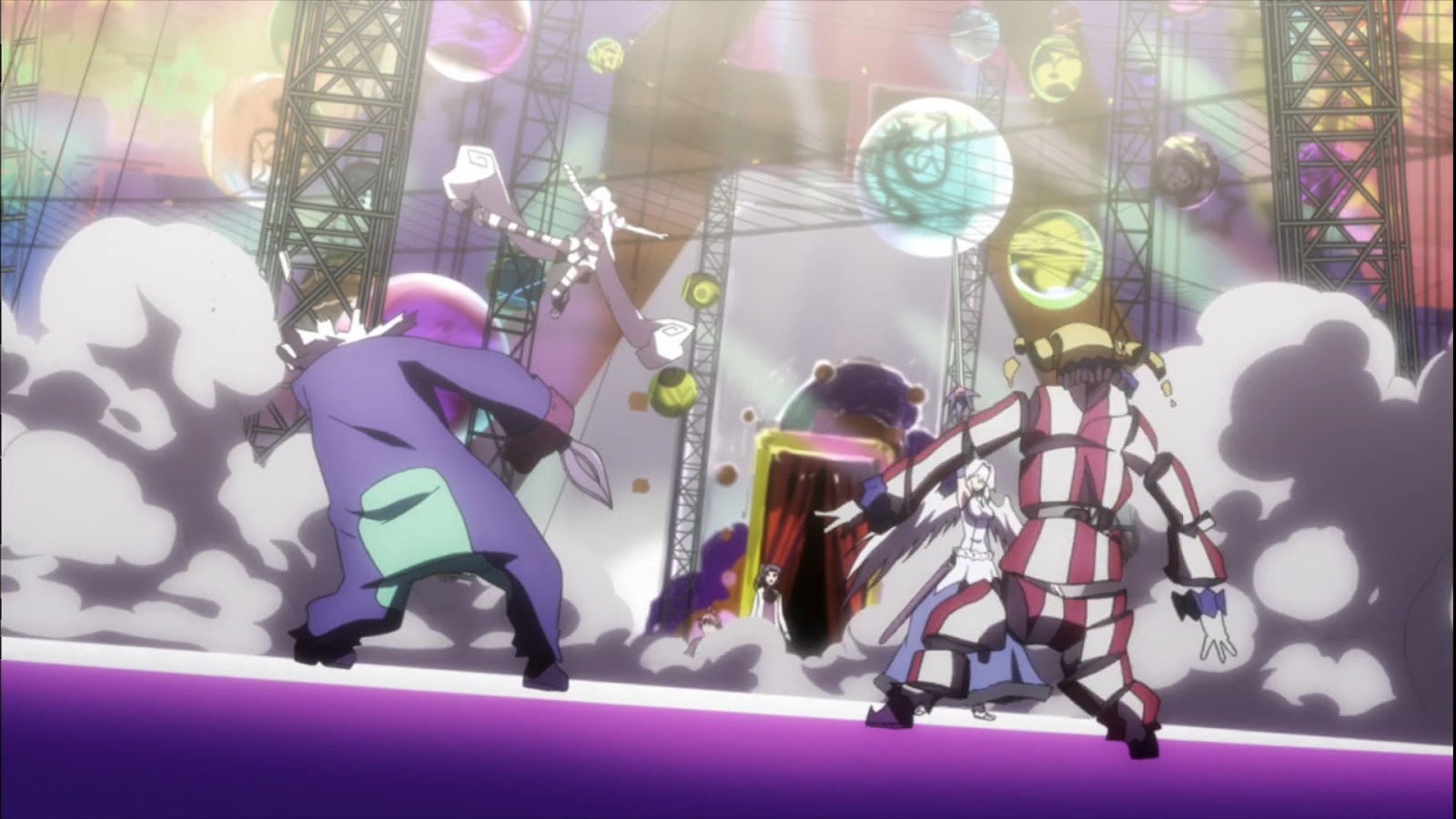
The character designs are fine; they are typical of this type of anime, but Merry, whose name is a play on the song Mary Had a Little Lamb, fits the bill with her distinctive outfit. The Dream Demons, rather than the main characters, are what stand out in this anime. I stayed for the dream demons, and their worlds are fantastic. I also enjoy the character designs throughout the anime.
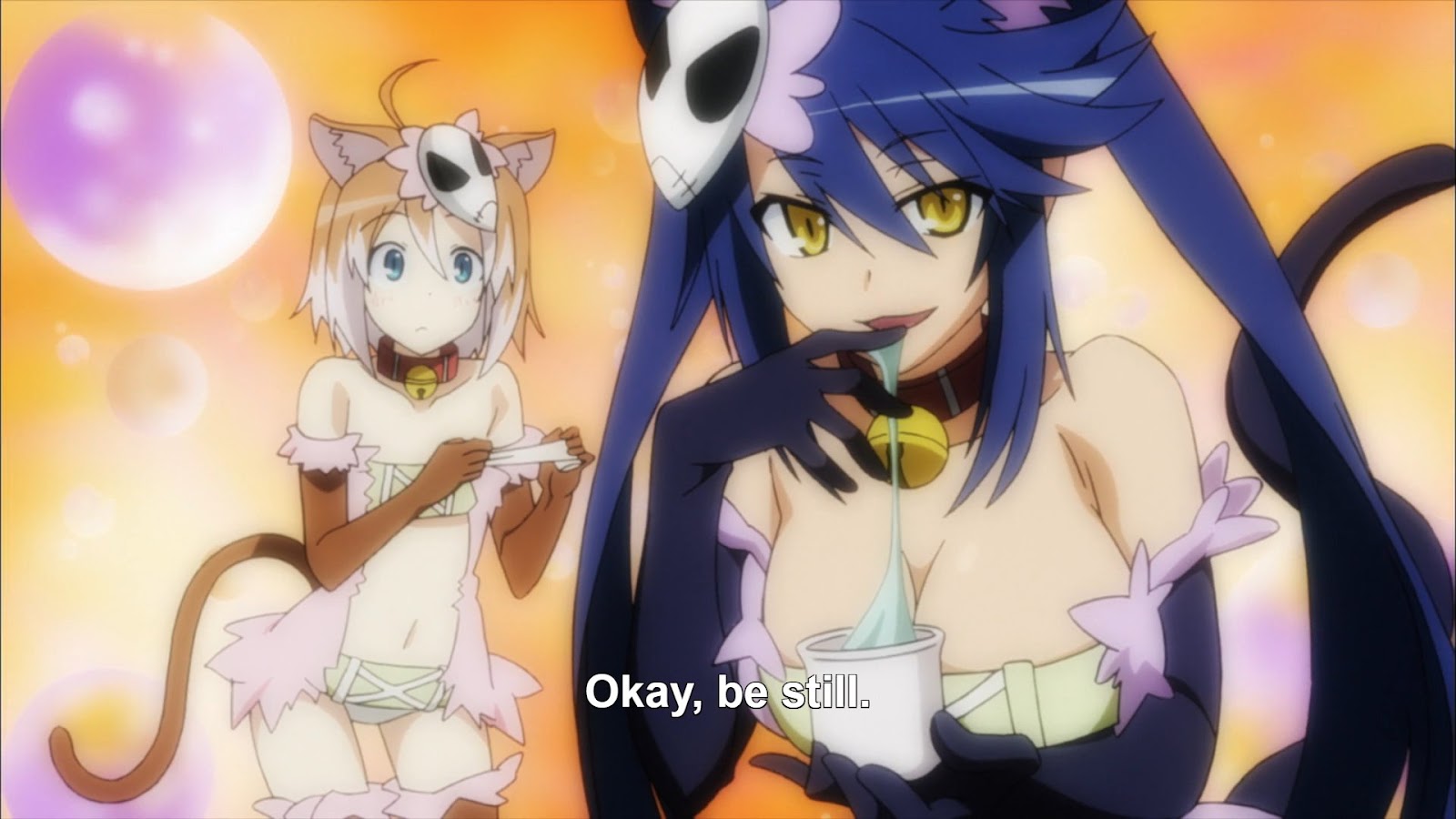
While I agree with others that the pacing is a bit off, I will not say it is unenjoyable. This is due to the background music and the voice acting throughout the series. I found that the characters meshed well, and Ayane Sakura, who voiced Merry, did an excellent job of taking the character through her emotional stages of growth. I have one question, Sayuri Yahagi: Where did you get that laugh for Mistilteinn? It is annoyingly sinister, and I love it!
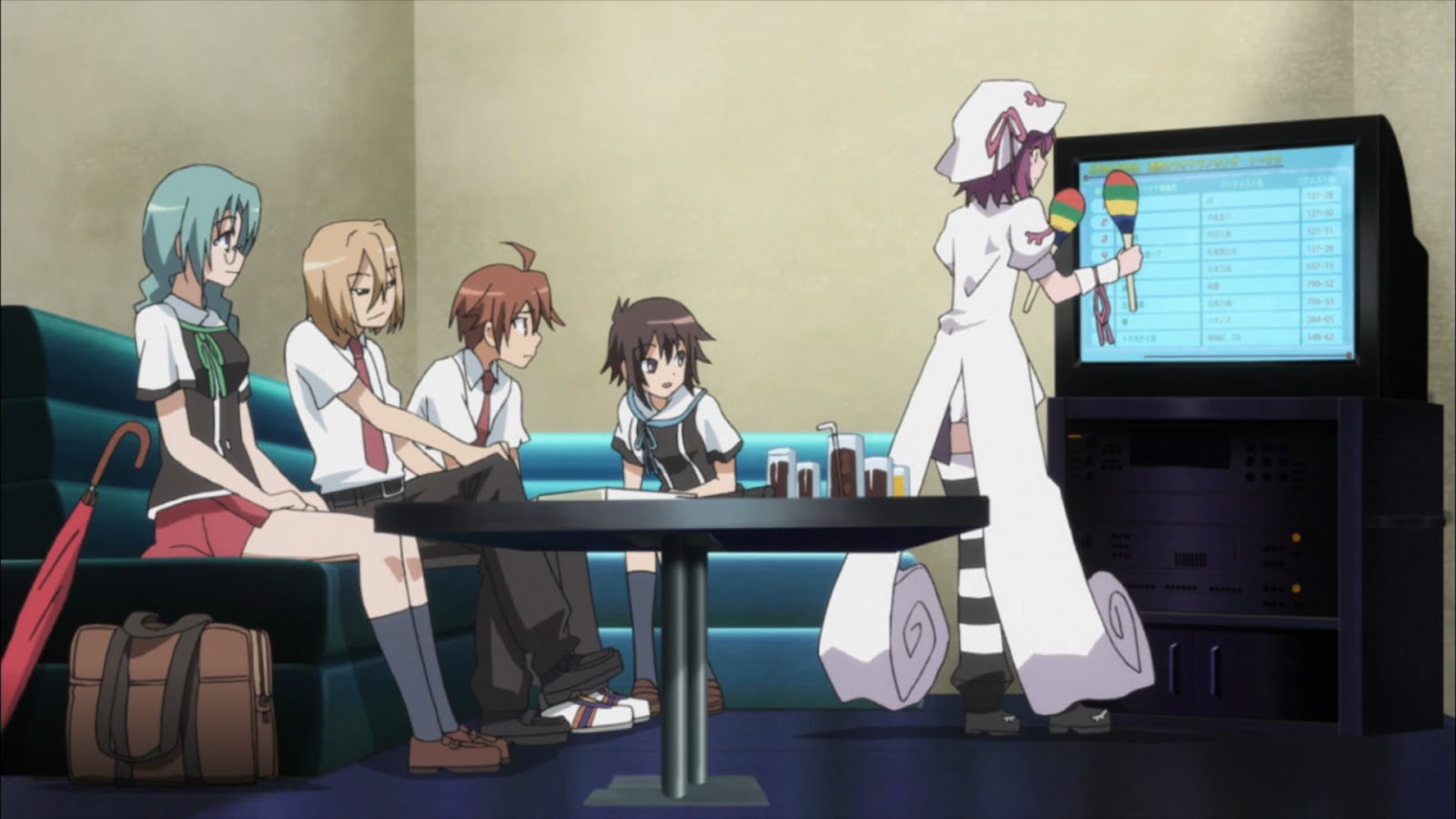
I won't go into the opening and ending themes; as you can look them up yourself, they do an excellent job supporting the anime. Okay, I do have to acknowledge the opening "Daydream Syndrome" by Marina Fujiwara, as it’s playing in the background during the literature club outing at Karaoke. It's a nice track, so much so that it had Merry playing the maracas in episode 4.
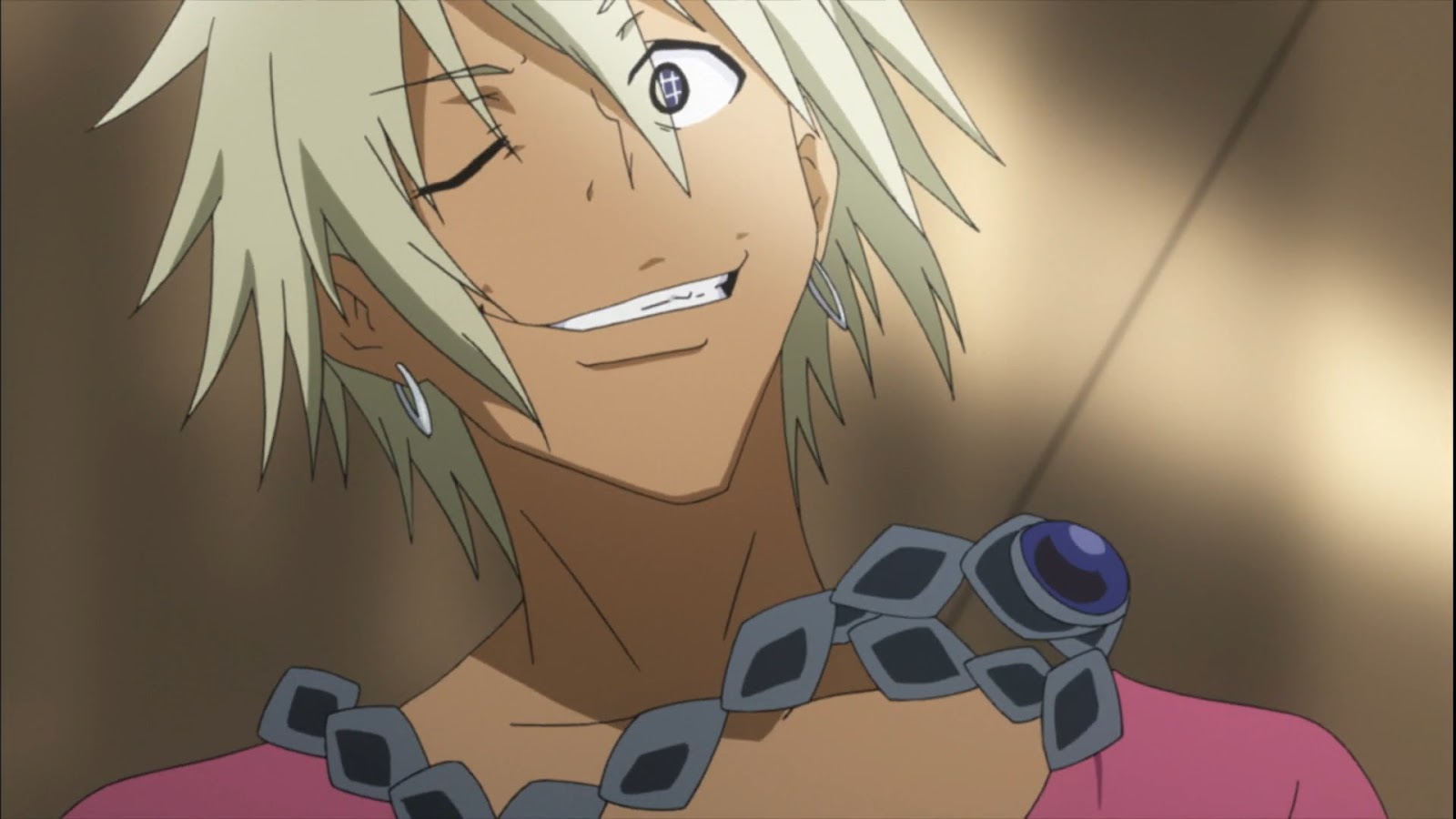
So, all in all, Dream Eater Mary might be an anime that some might say is style over substance. As one reviewer said, it was a poor man's “Soul Eater,” but I do not know. I like Dream Eater Merry for what it is. It is a fun anime that explores the world of dreams and goals and how humans feel about them. It makes one wonder if some type of spirit is pushing us along to achieve those goals. The anime also deals with what happens when we lose sight of those goals.
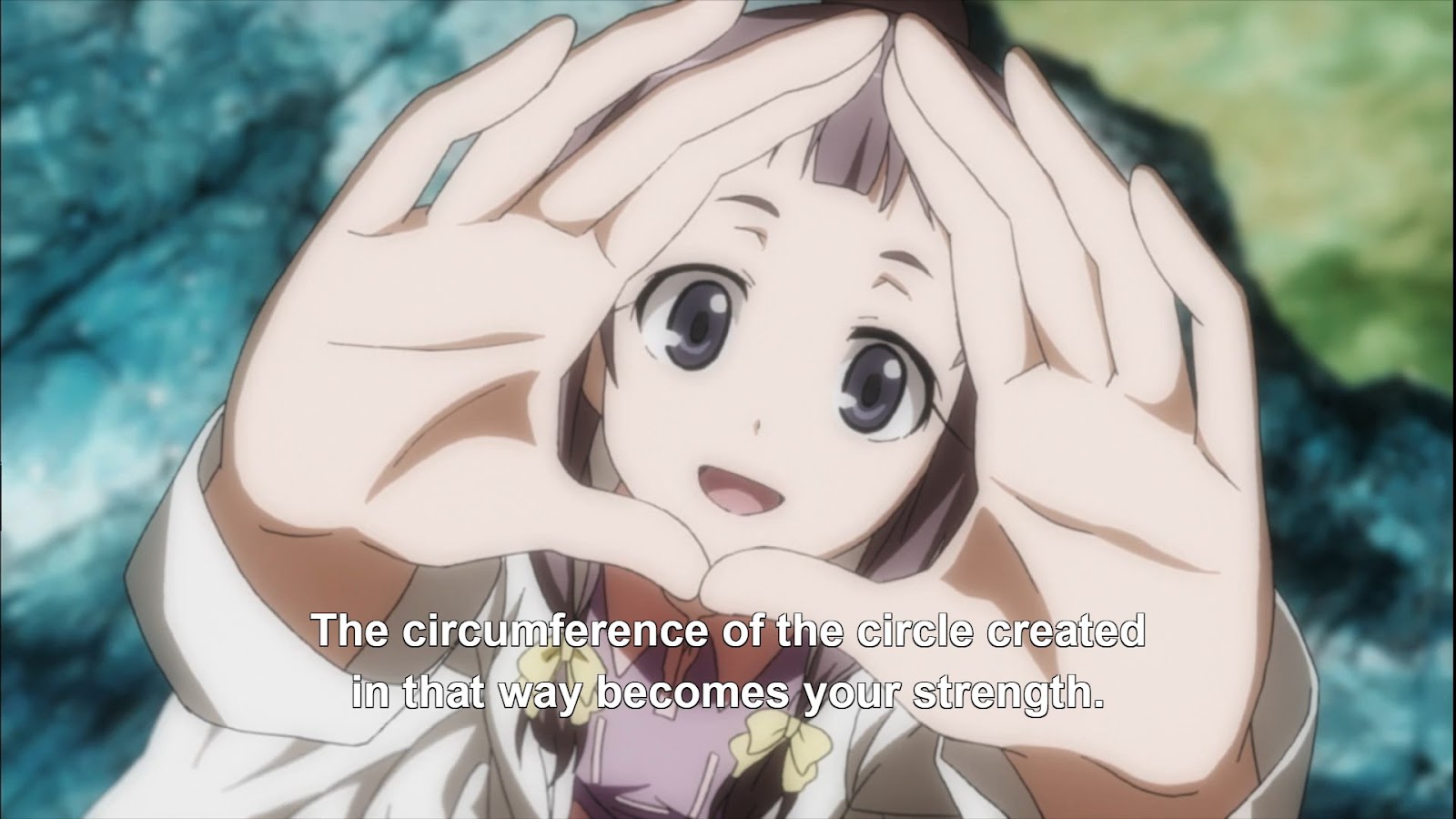
Obviously, it only does this on the surface; it does not go into extreme detail, but you have that life experience thing going on, and the audience for whom this is marketed, I believe, is not thinking that deeply. So, is this anime recommended? Yes, it is recommended, and given its pacing, it moves quickly and leaves a few questions unanswered.
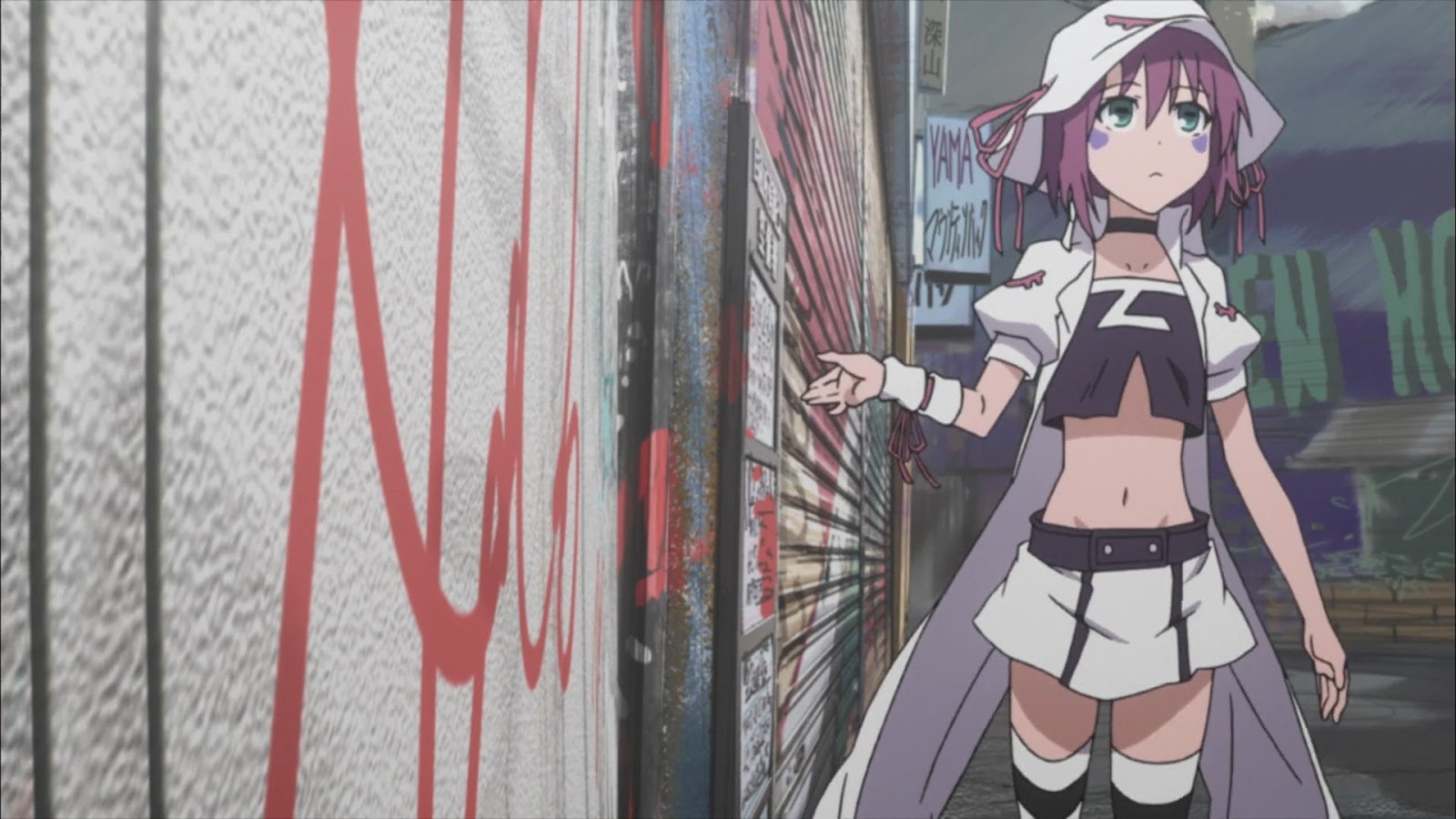
However, this caveat is something we always say around here. If you have read the manga, you might or might not like this anime; it depends on whether you think an animation should stick to the manga or try to portray something new.
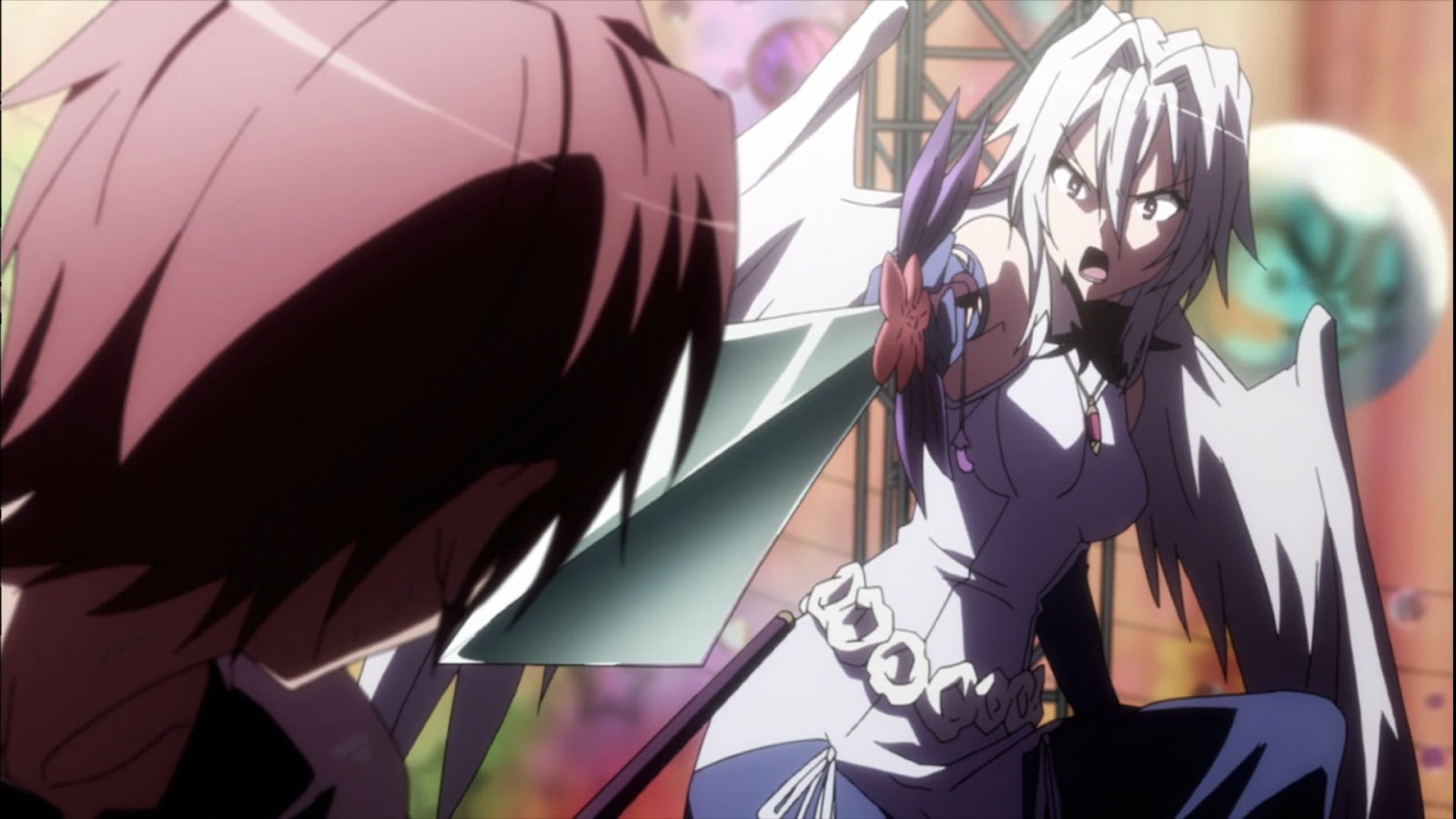
Despite his feelings on the subject and his feeling that he could not direct action scenes with Moe characters very well, the action scenes aren’t spectacular; Shigeyasu Yamauchi did a decent job of guiding this anime, and if you like the aesthetic, I think its an anime you’ll enjoy well.
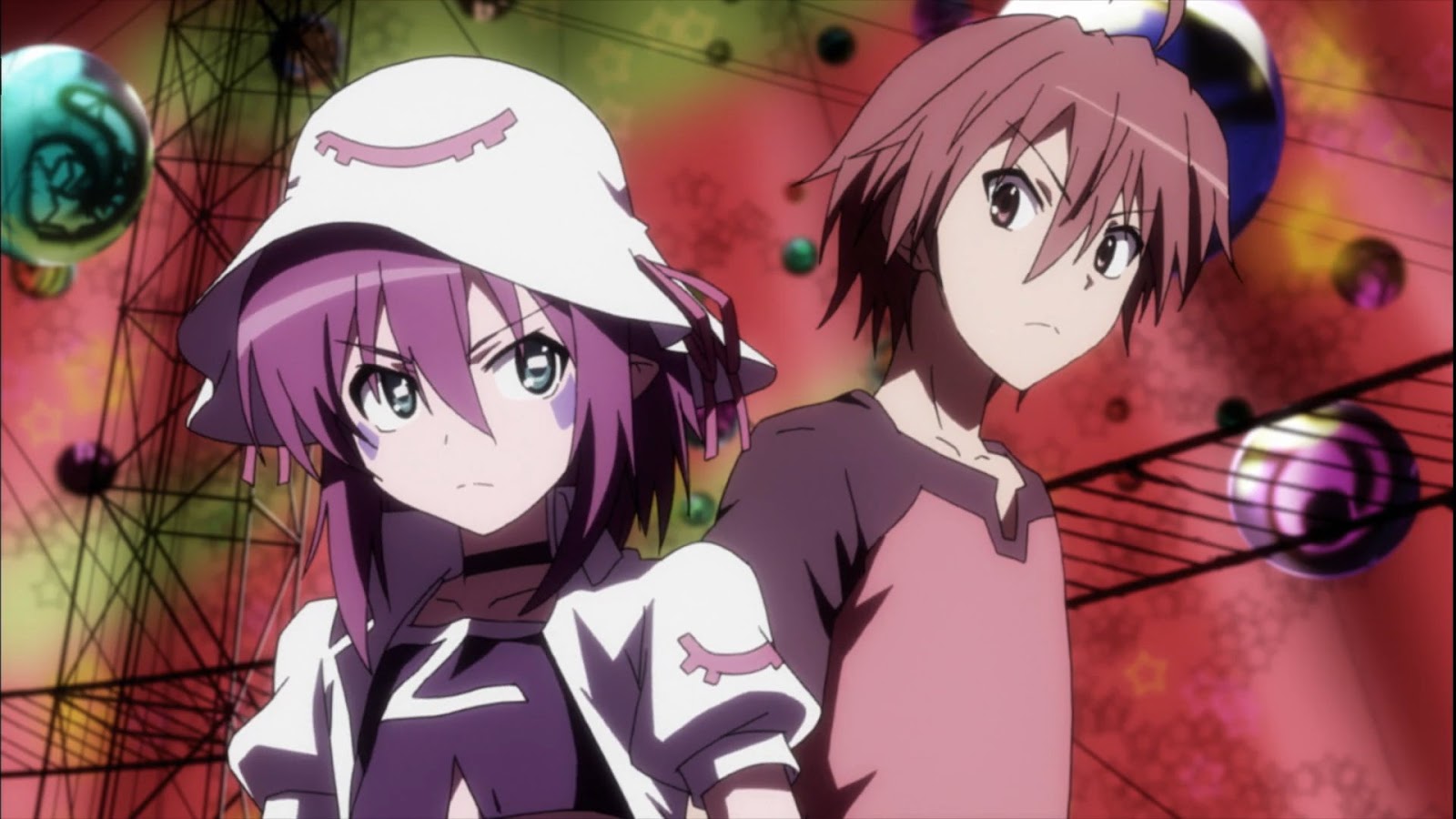
Please Like, Comment, Share or click one of the links below to read another post.
https://pinnedupink.com/blogs/random-thoughts-because-mondays-suck
https://pinnedupink.com/blogs/on-screen
https://pinnedupink.com/blogs/flashbacks
